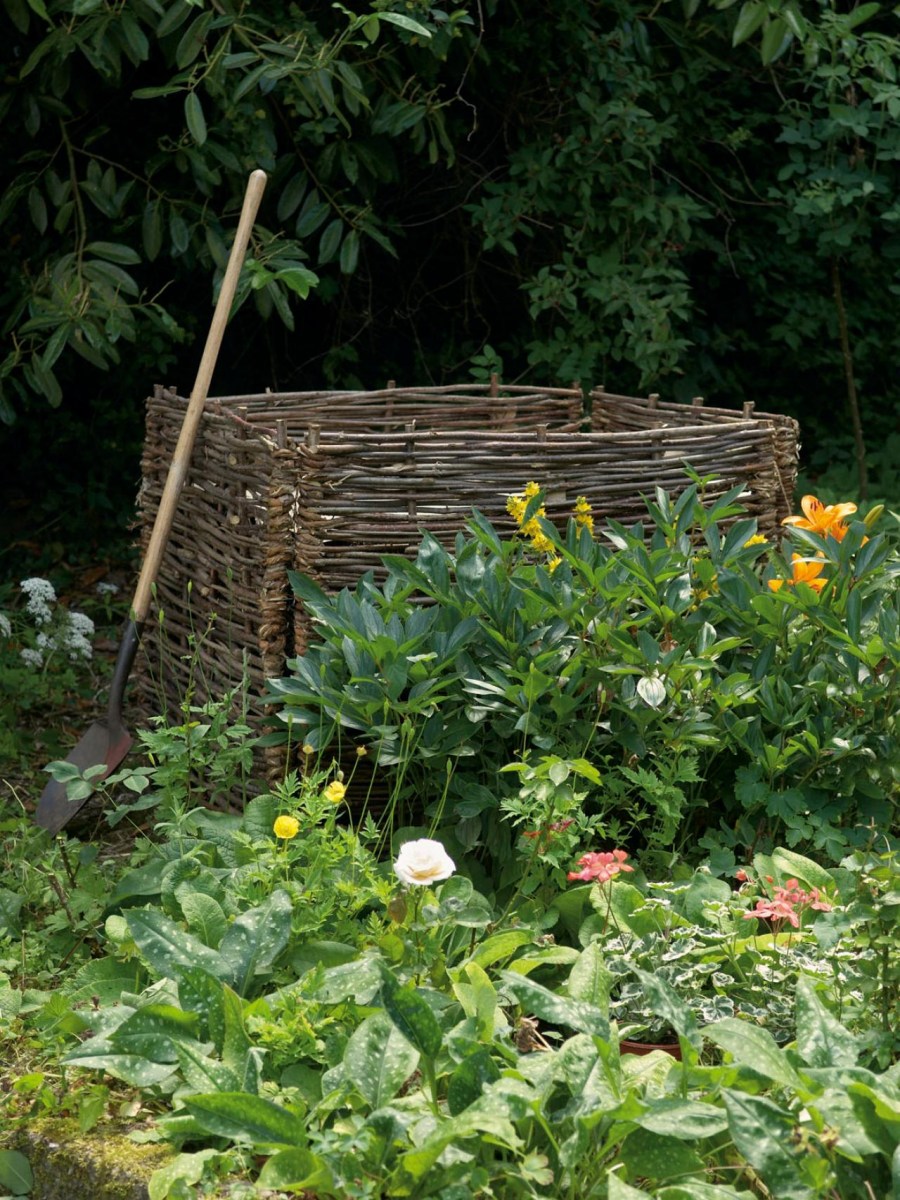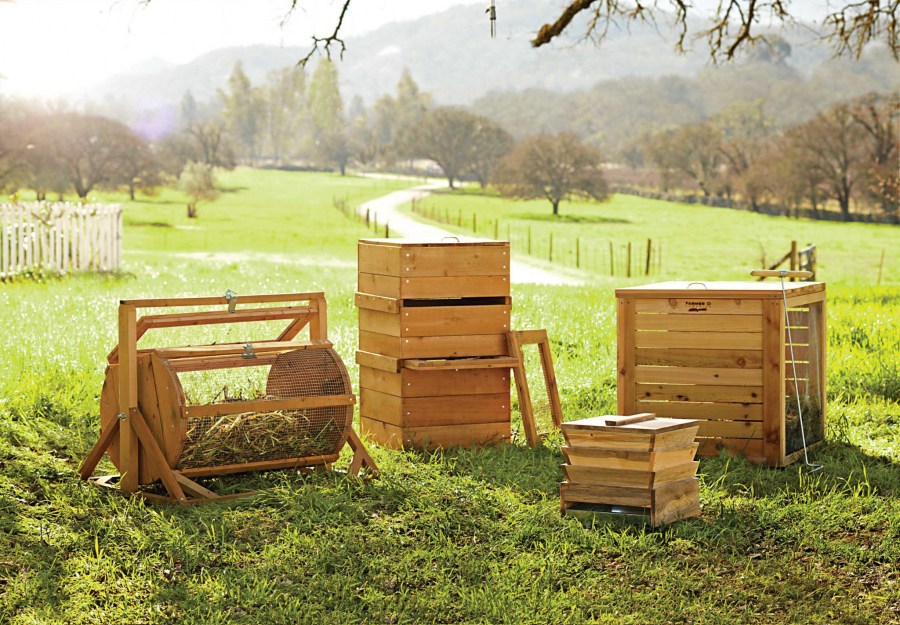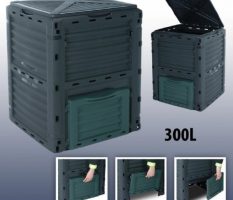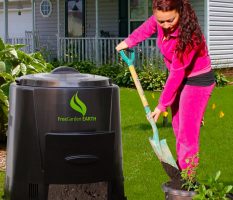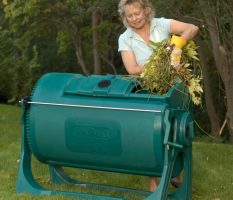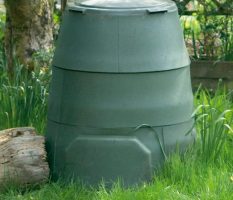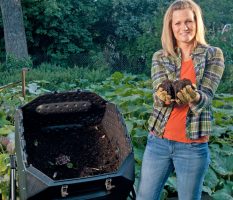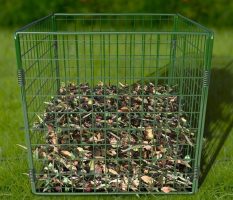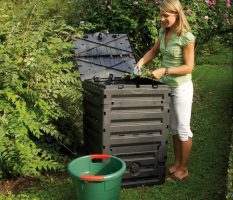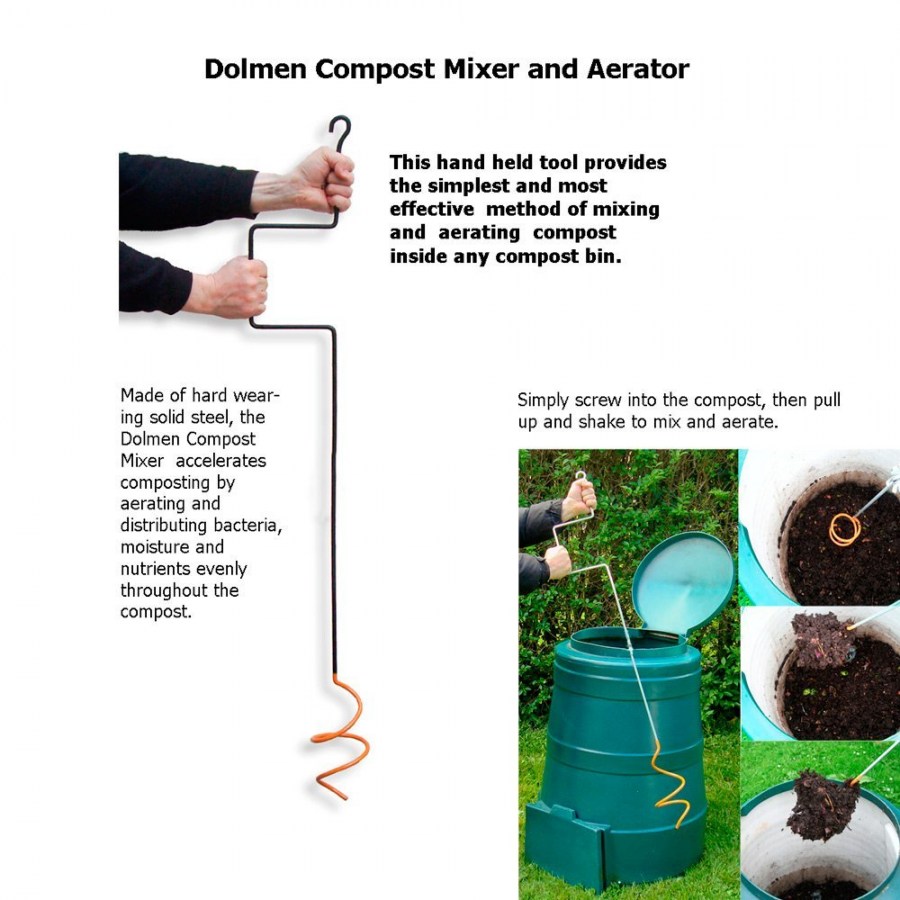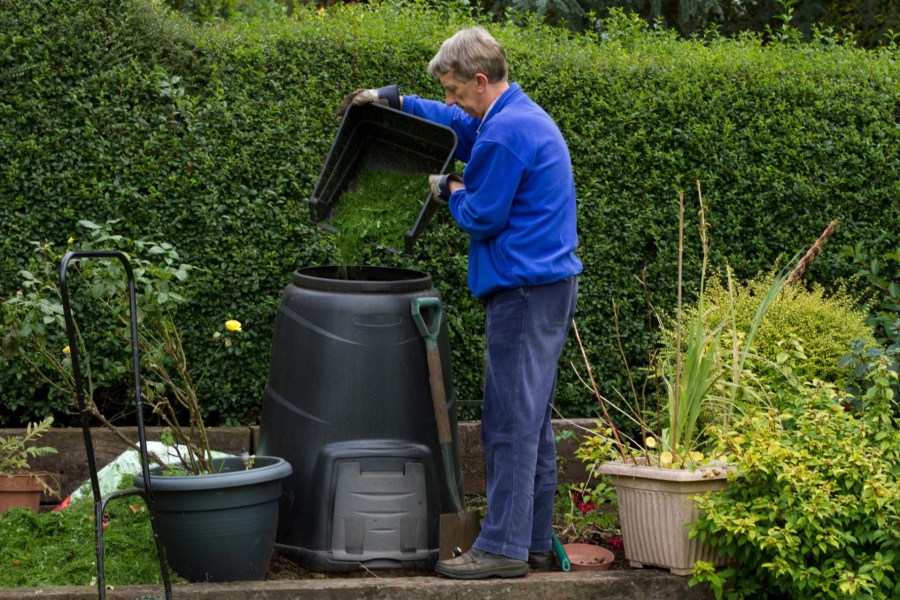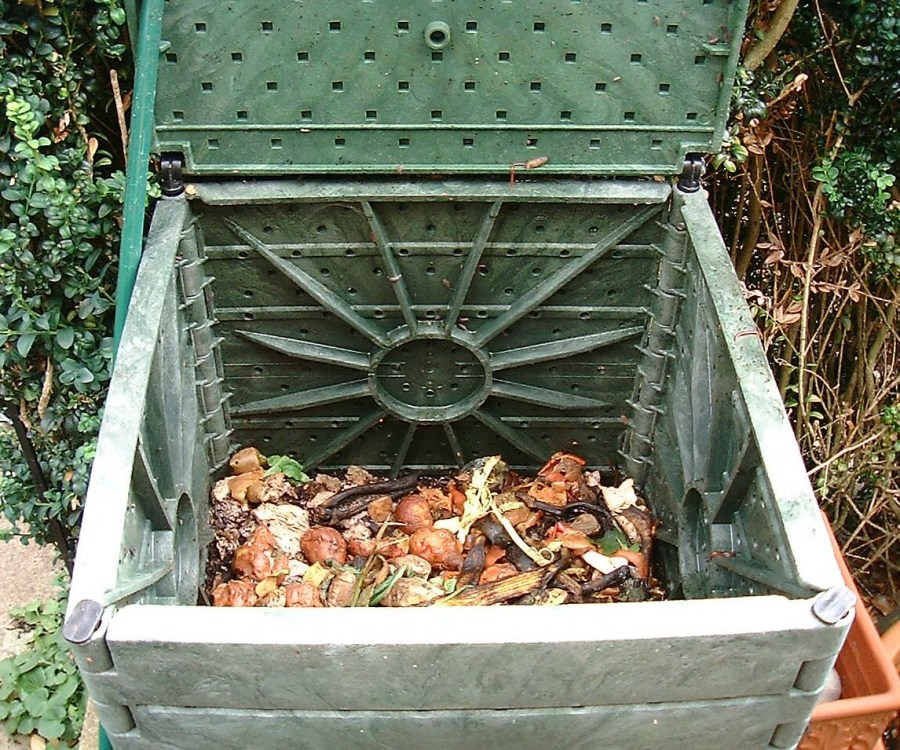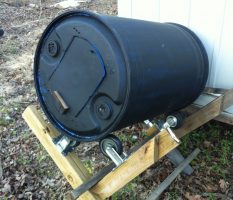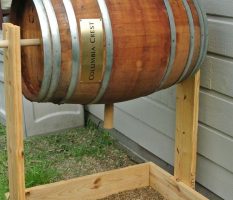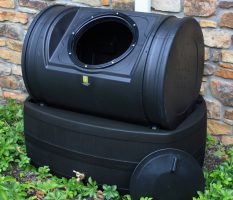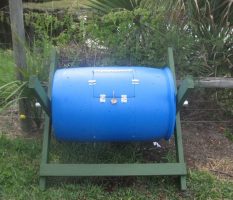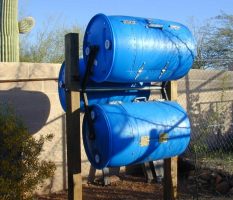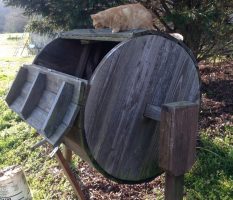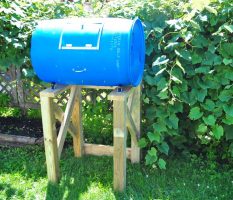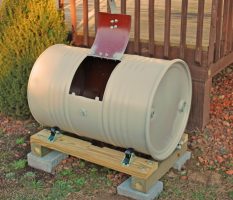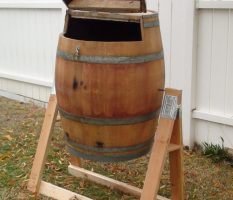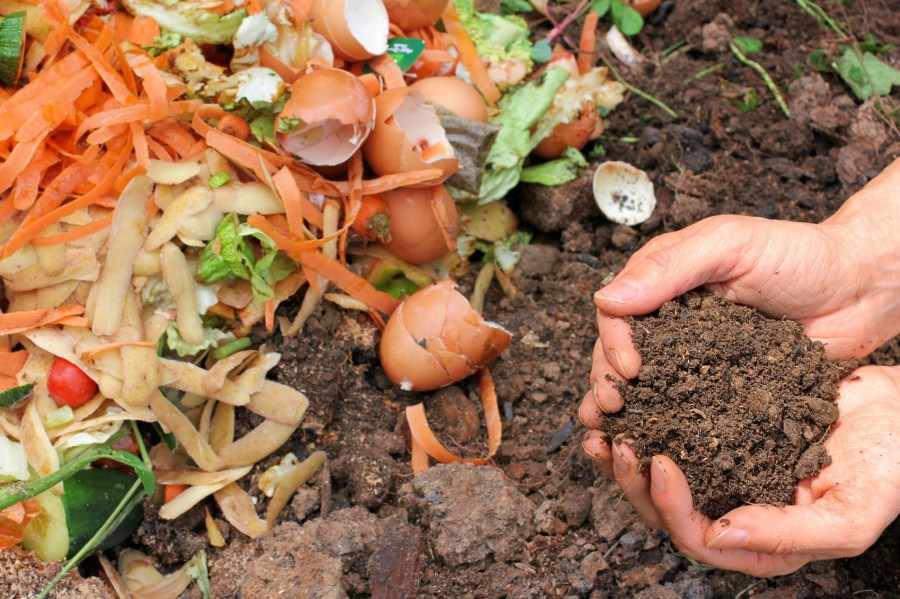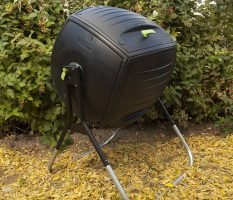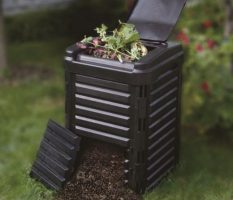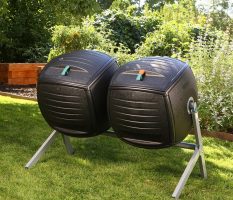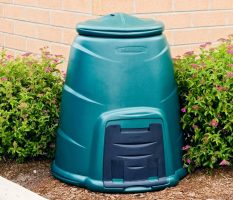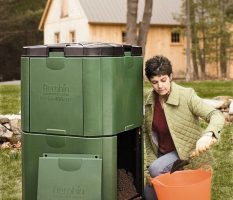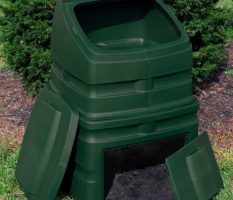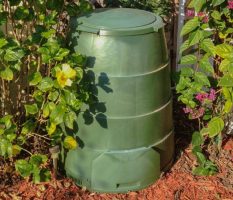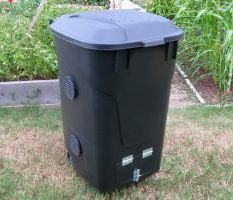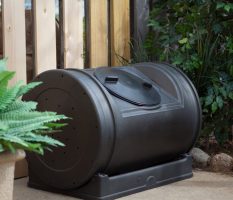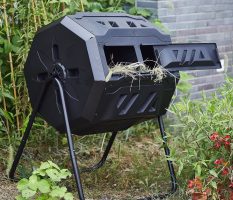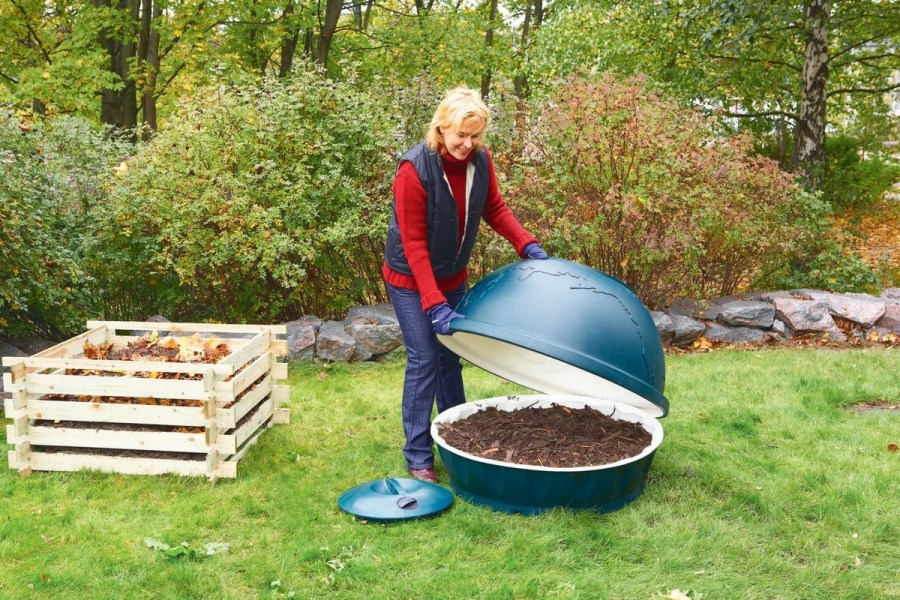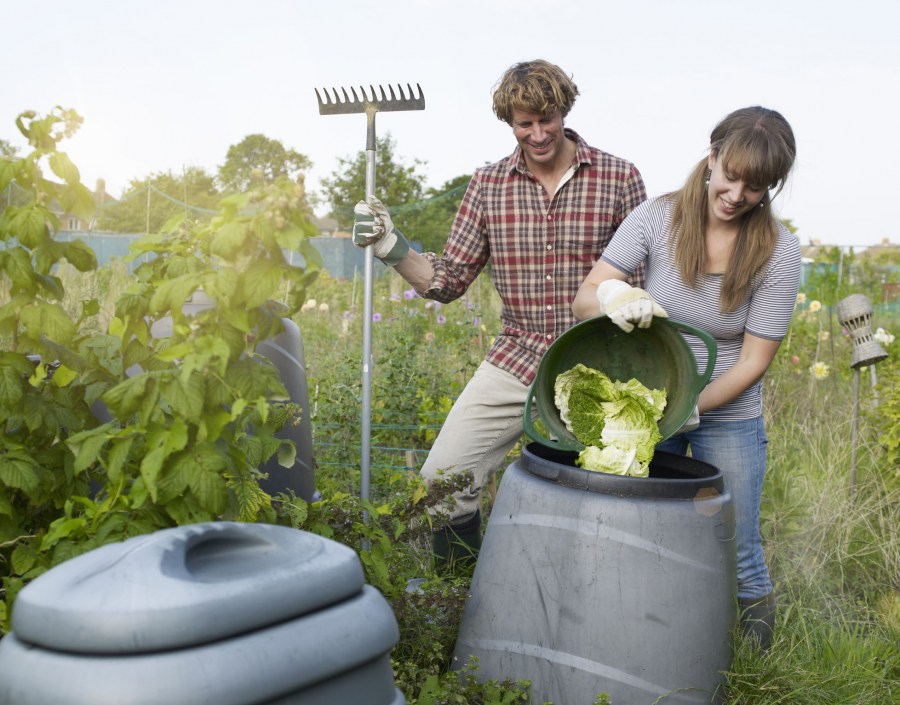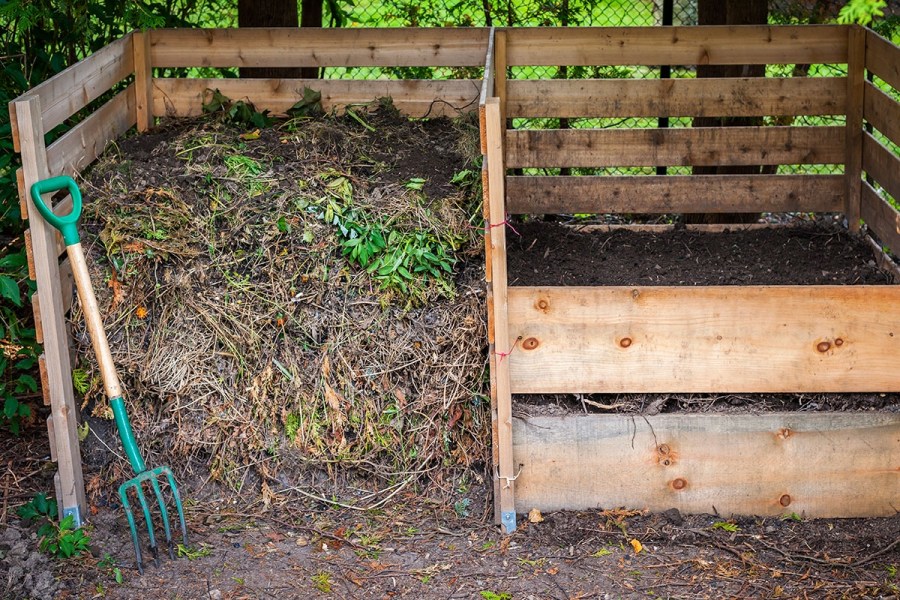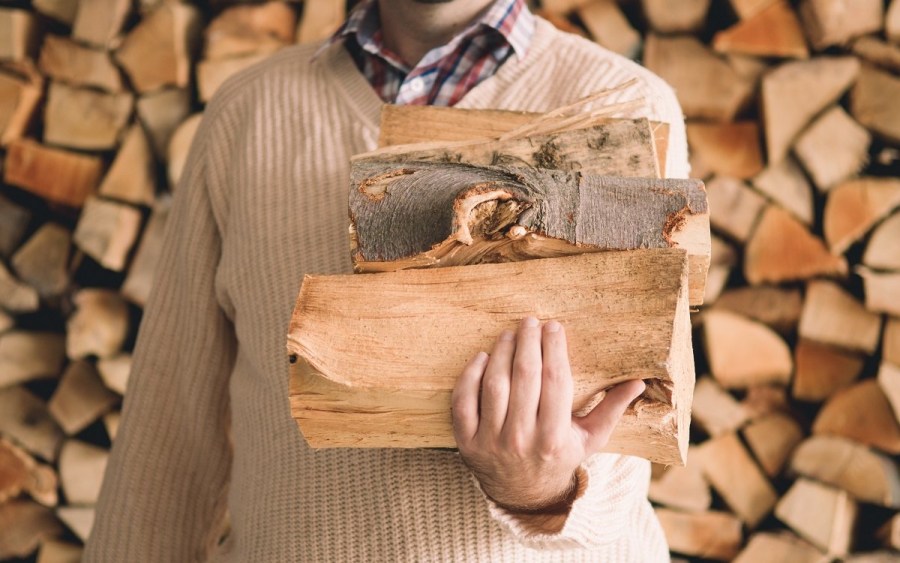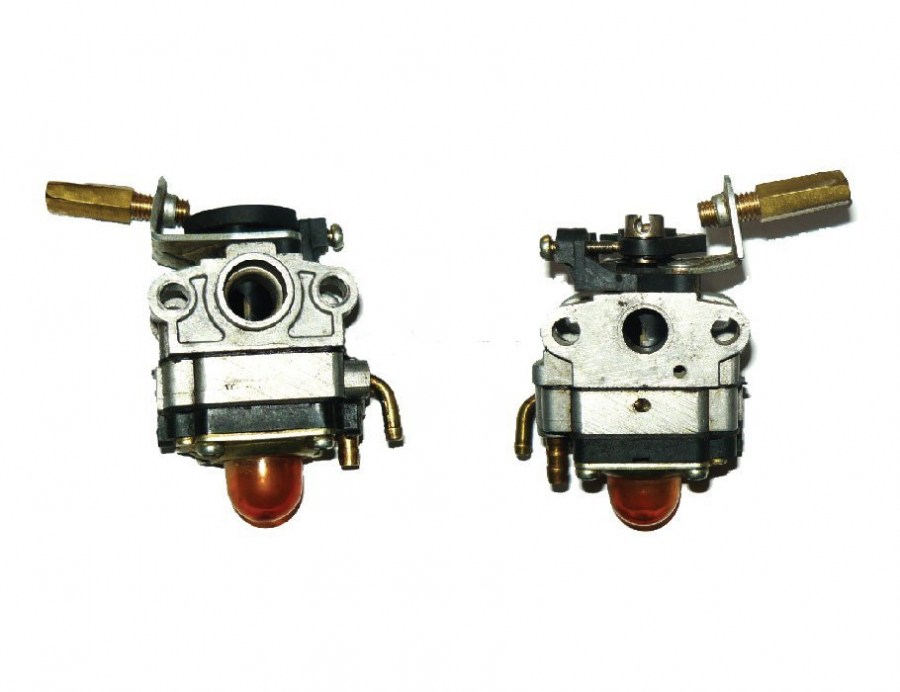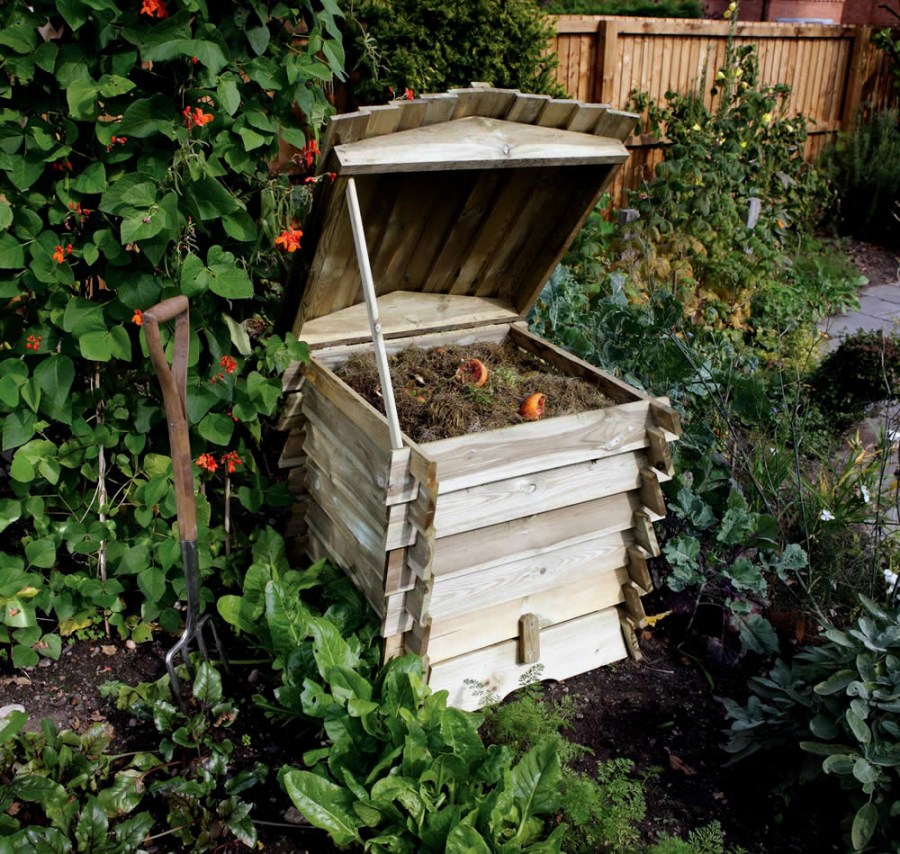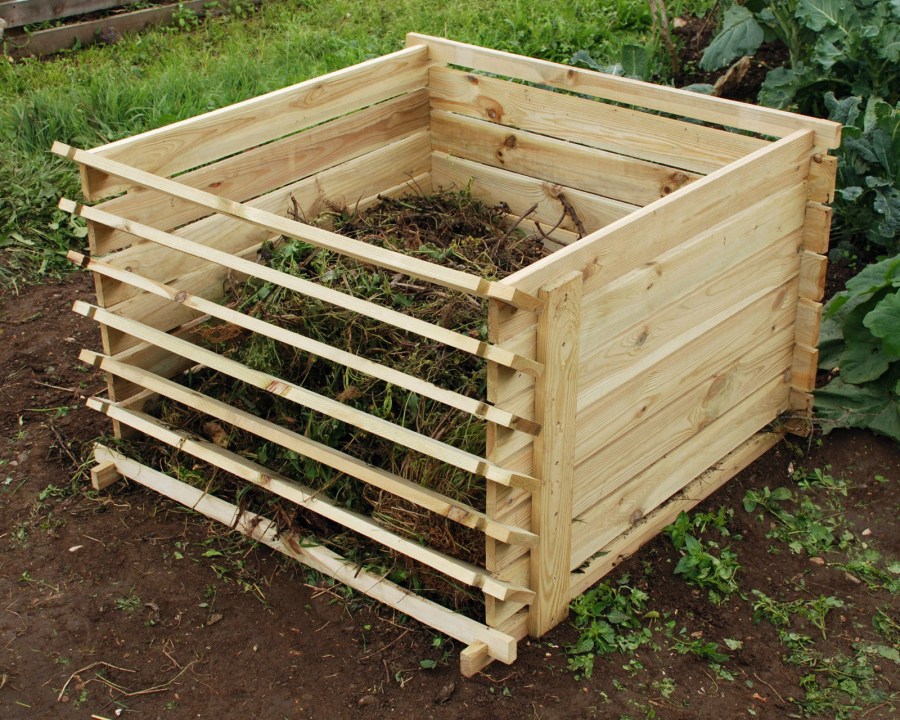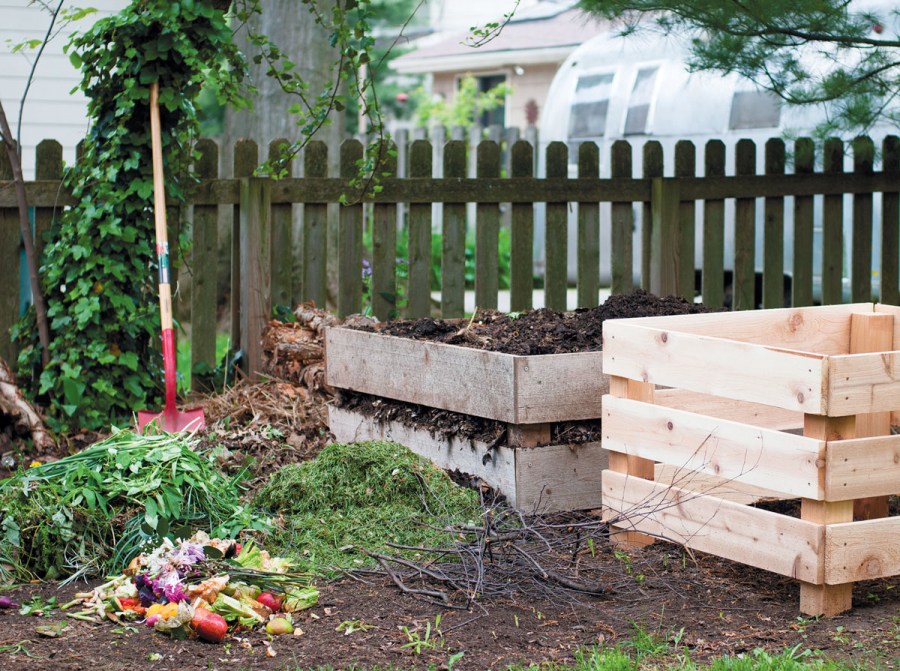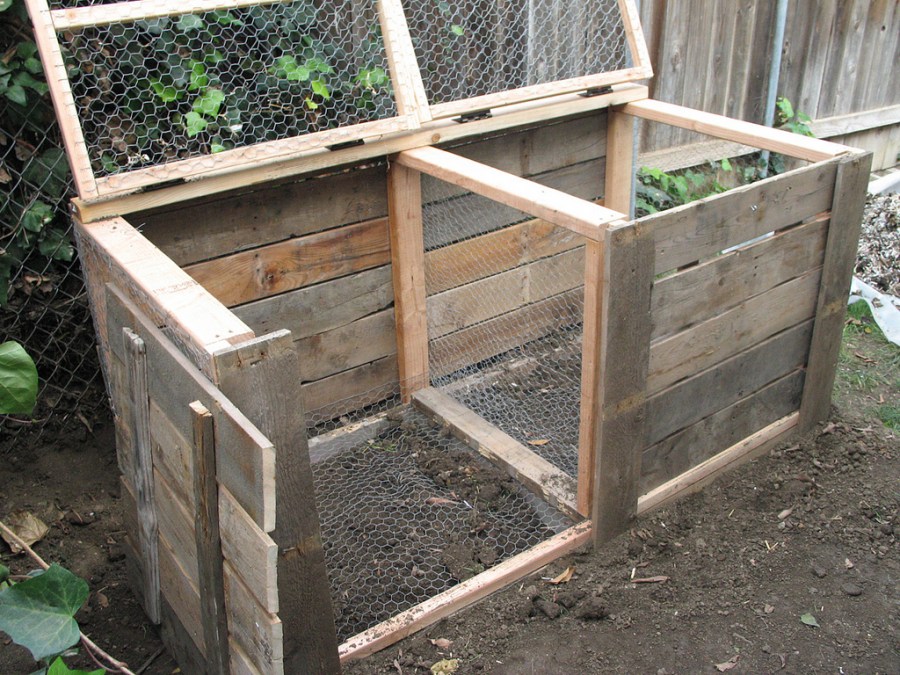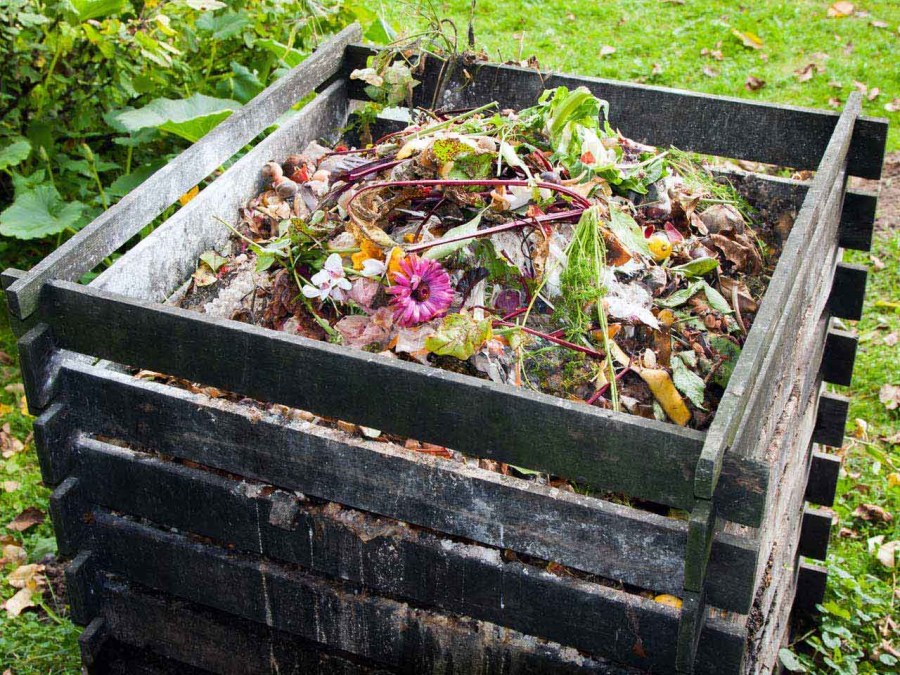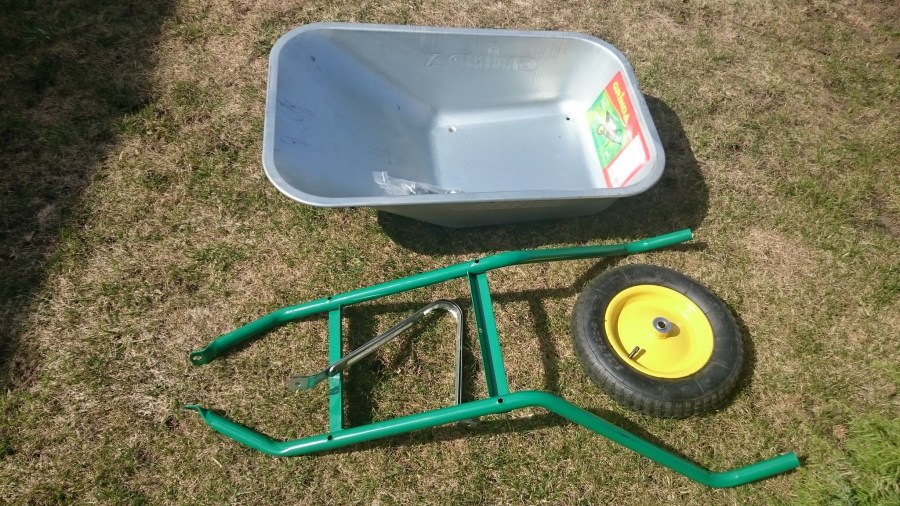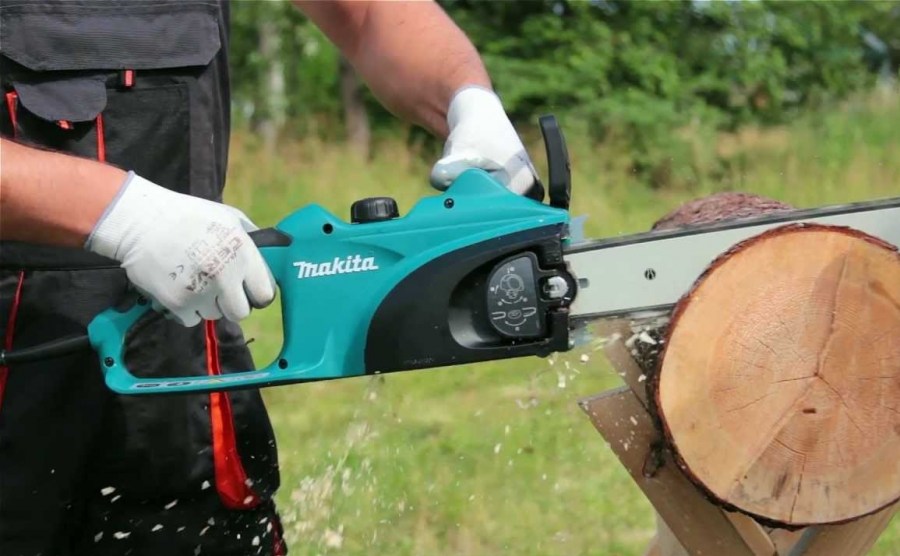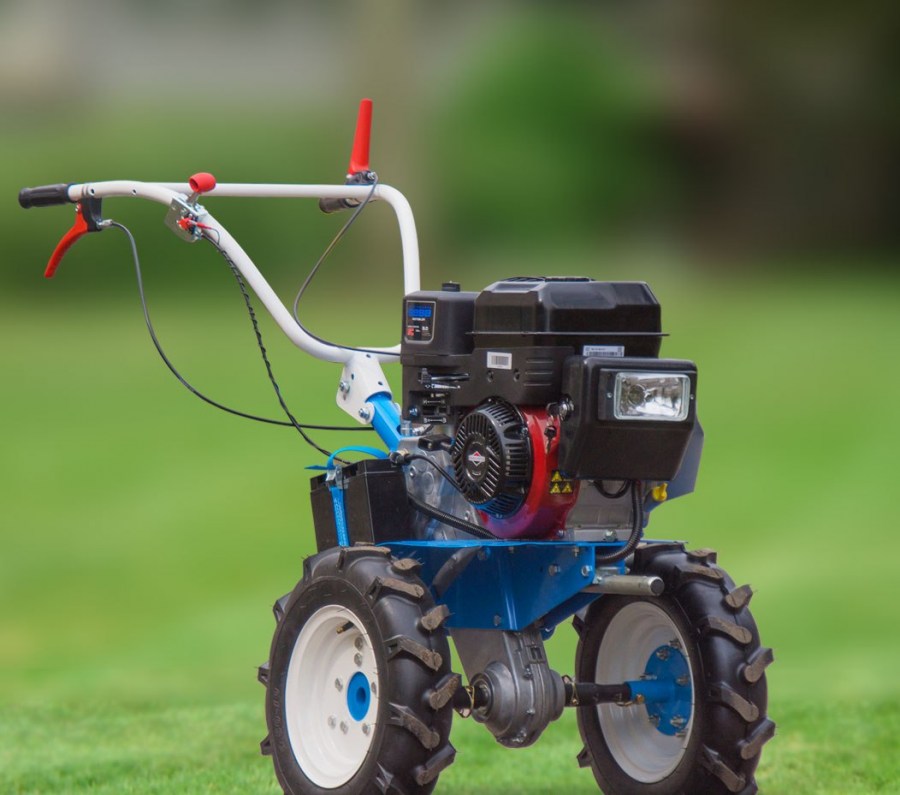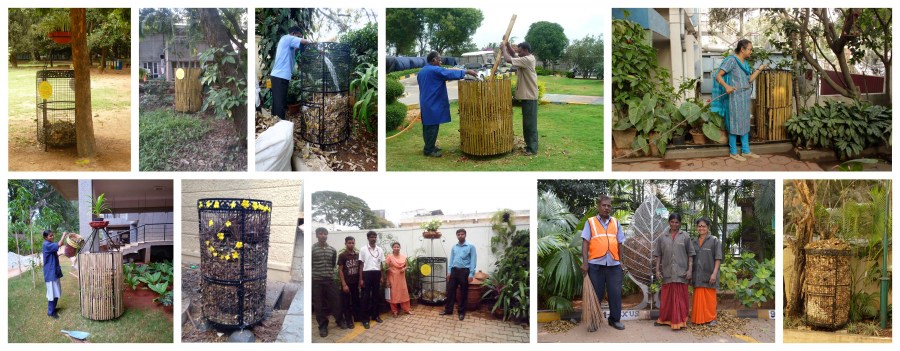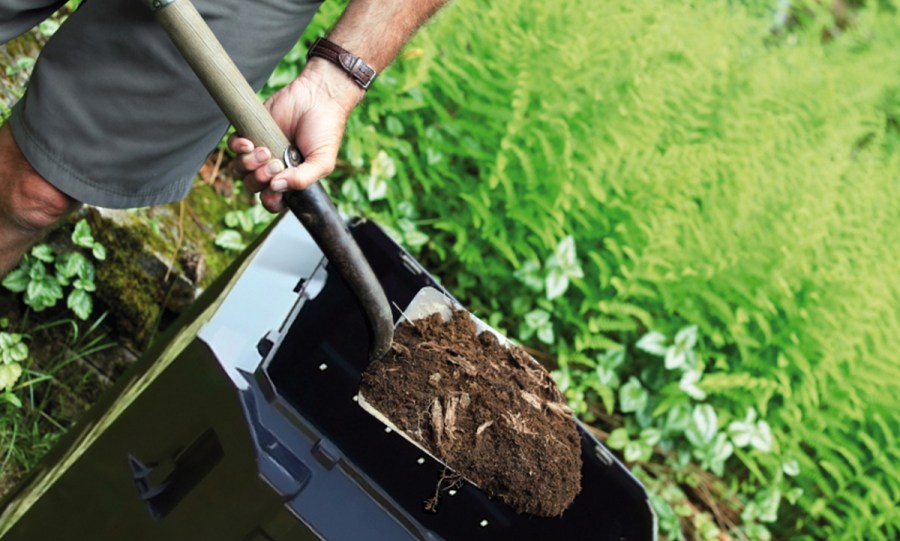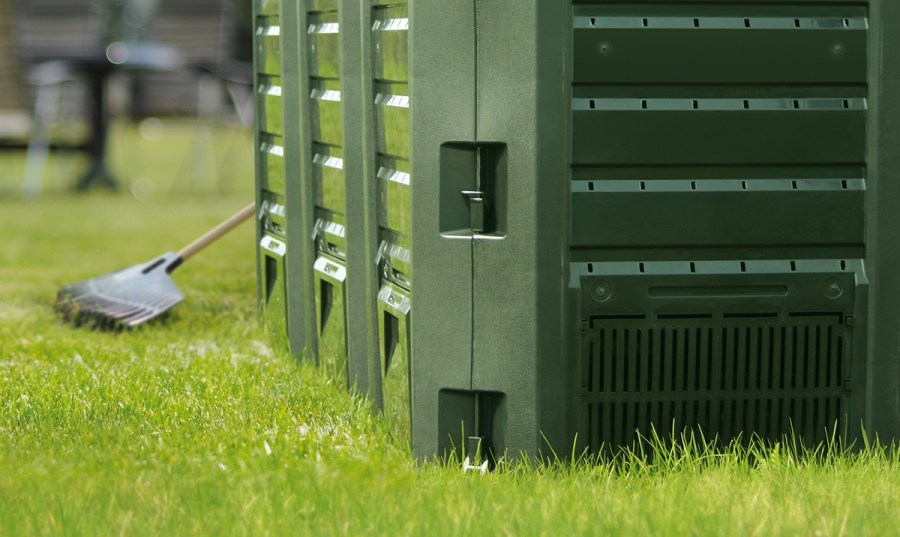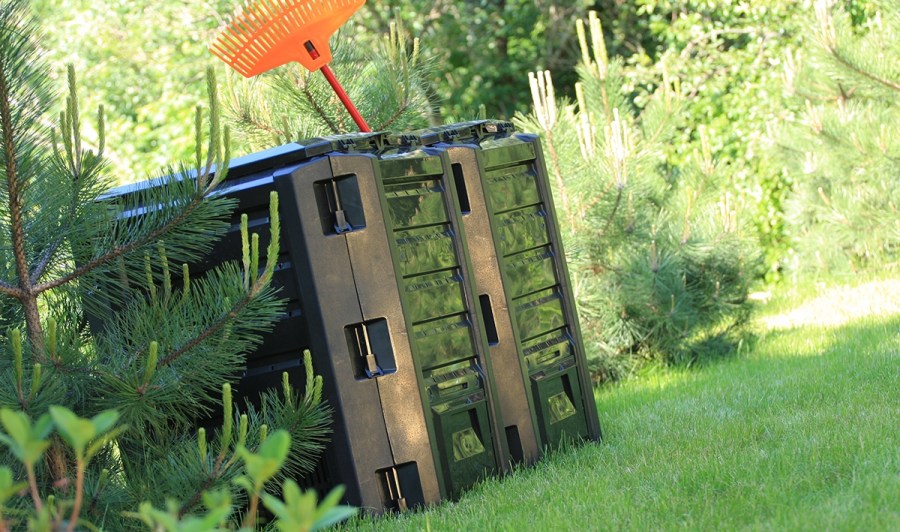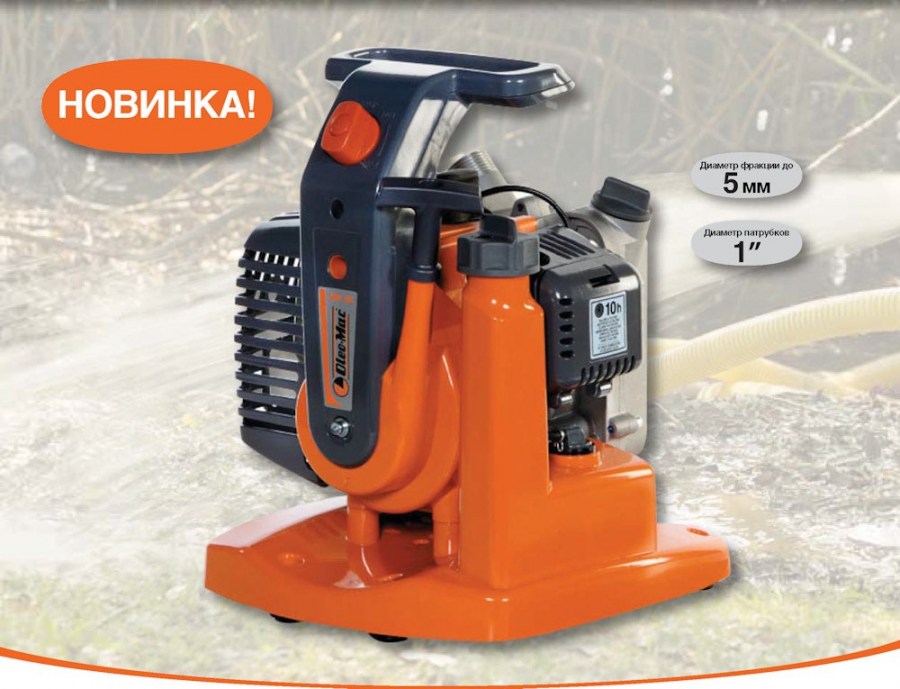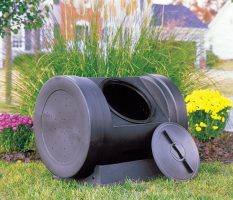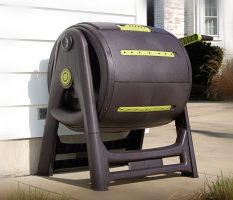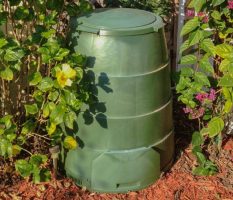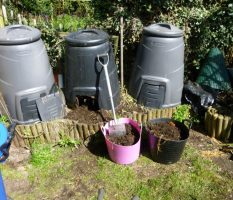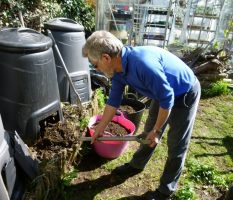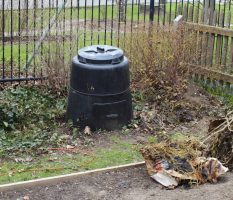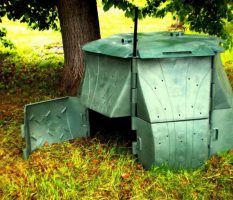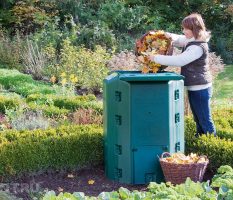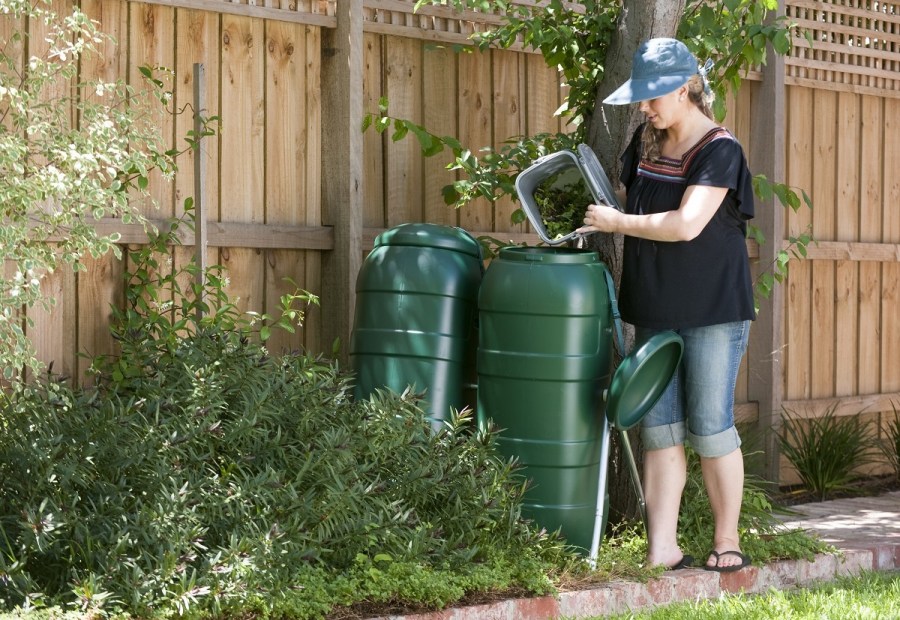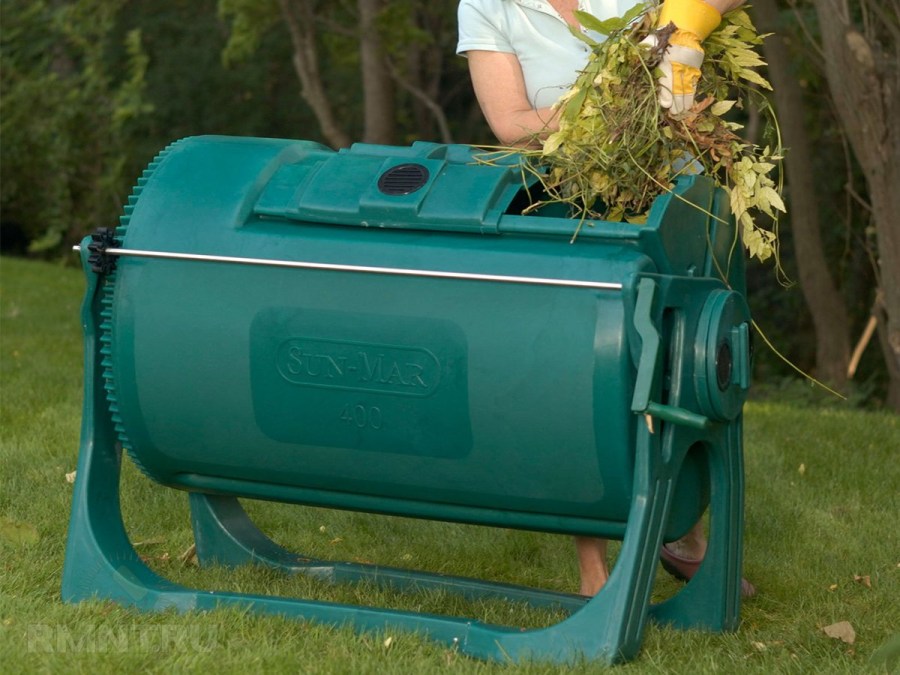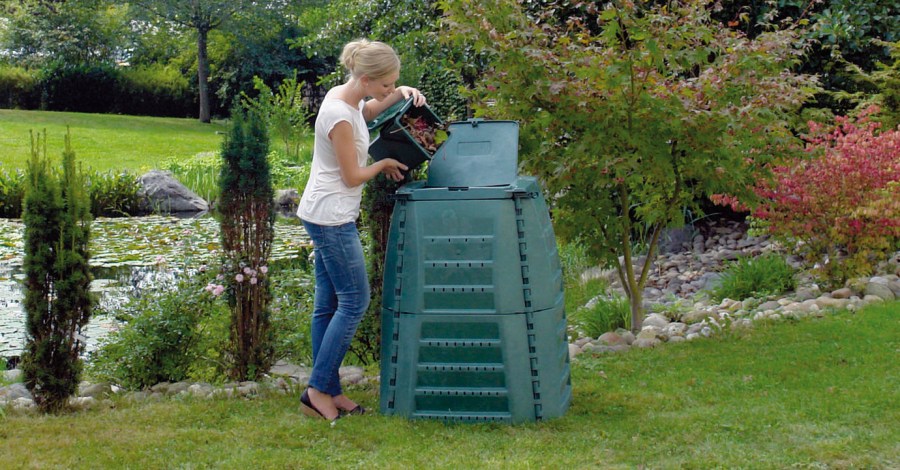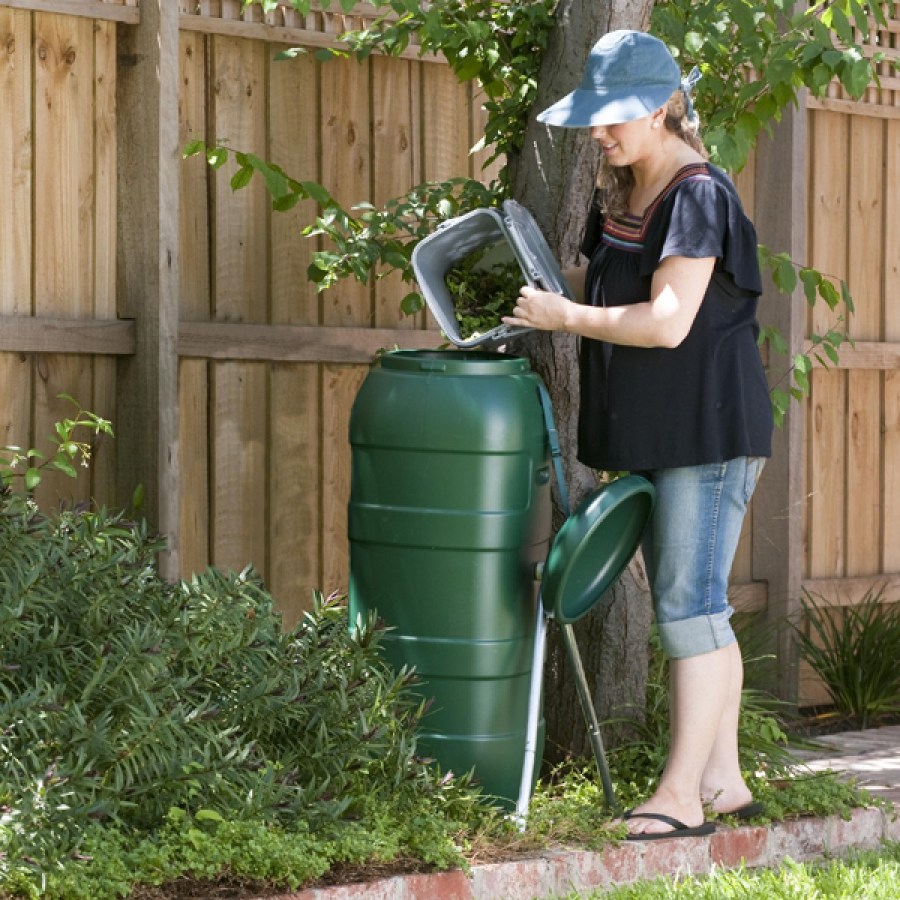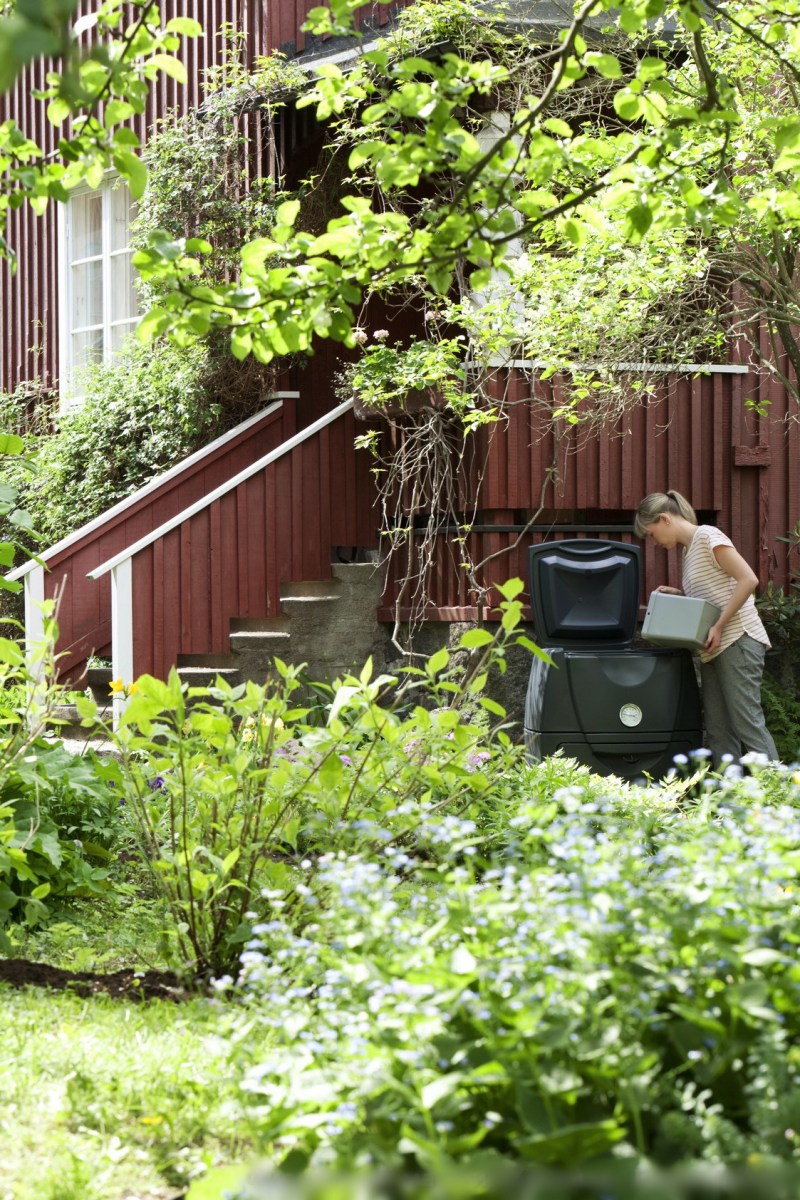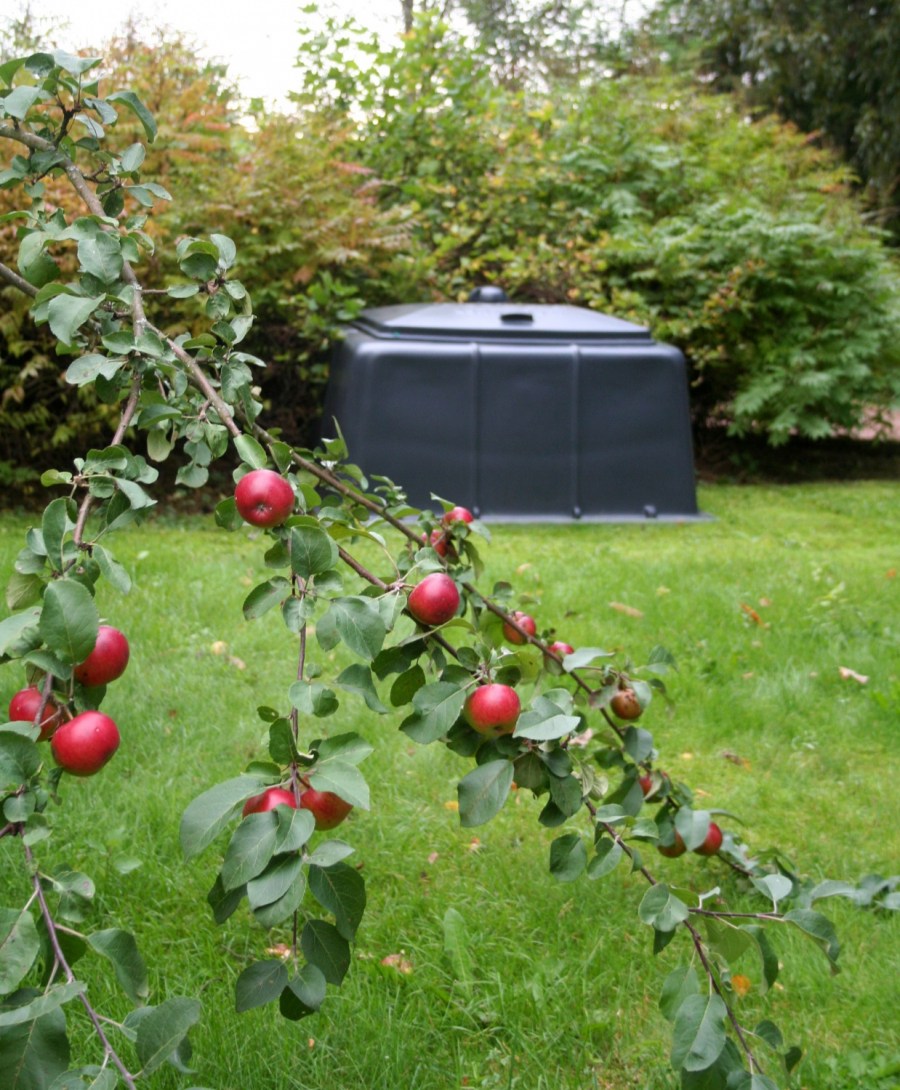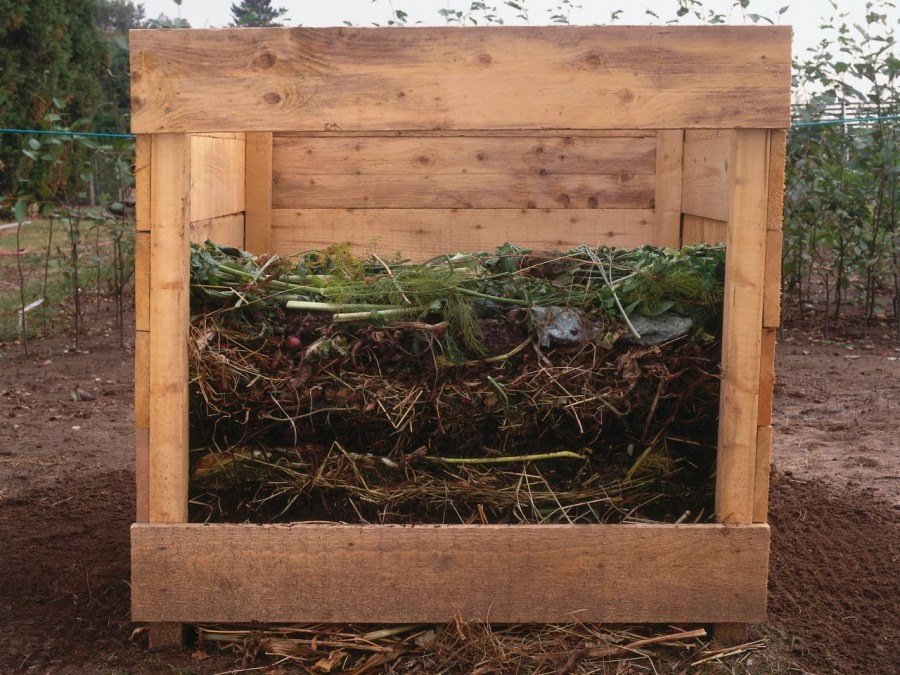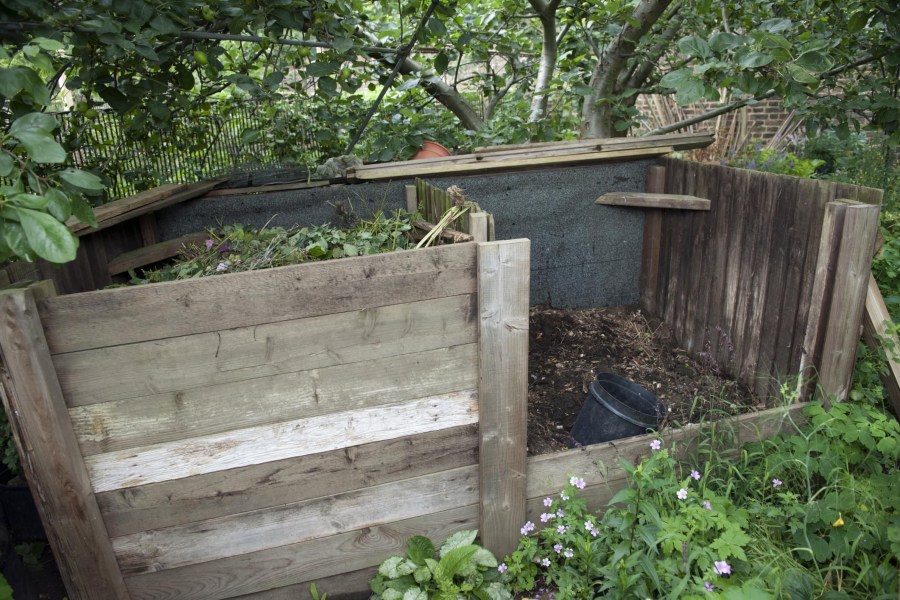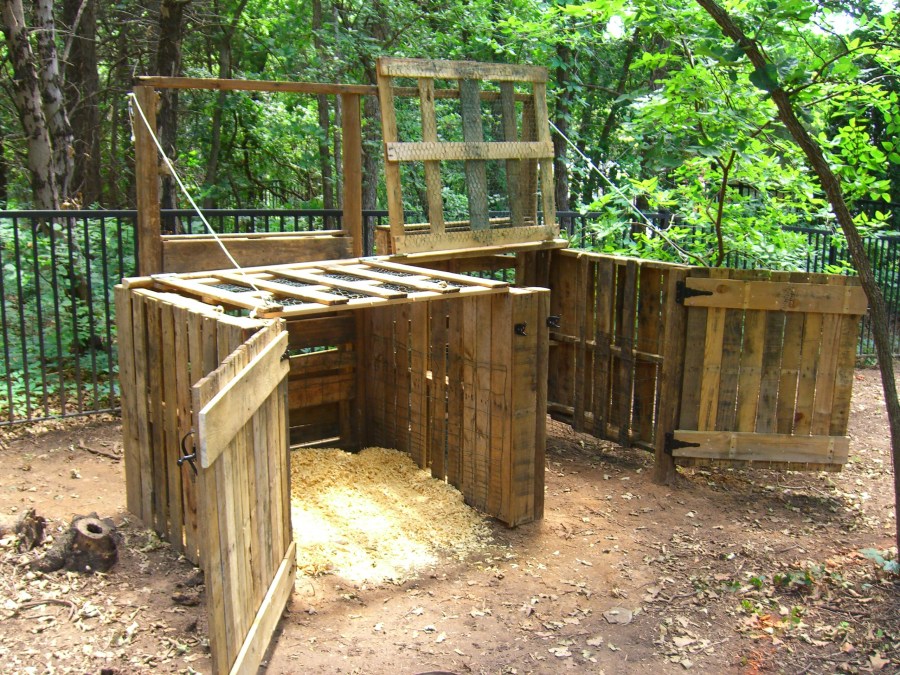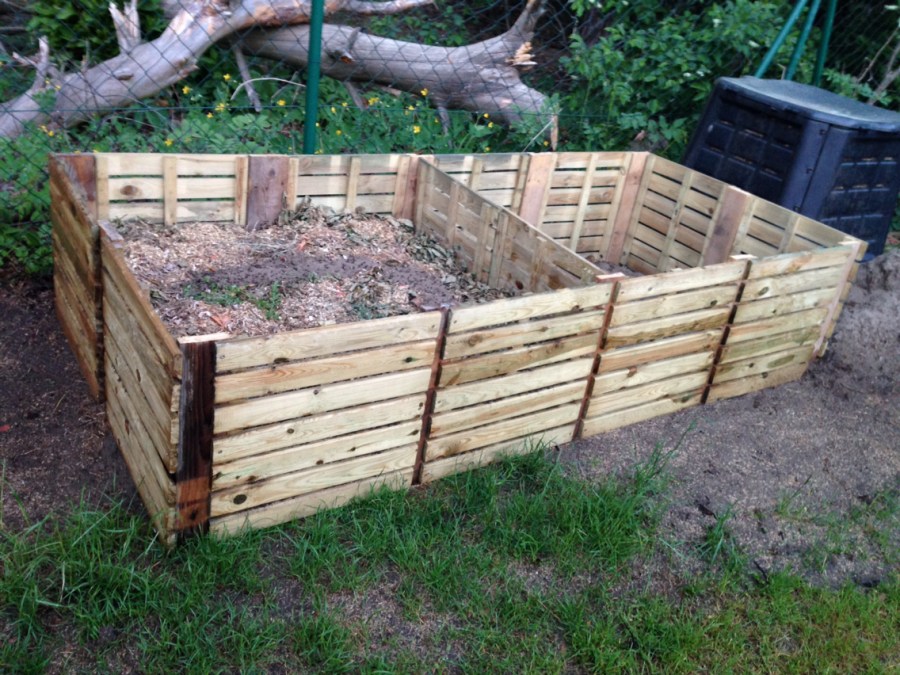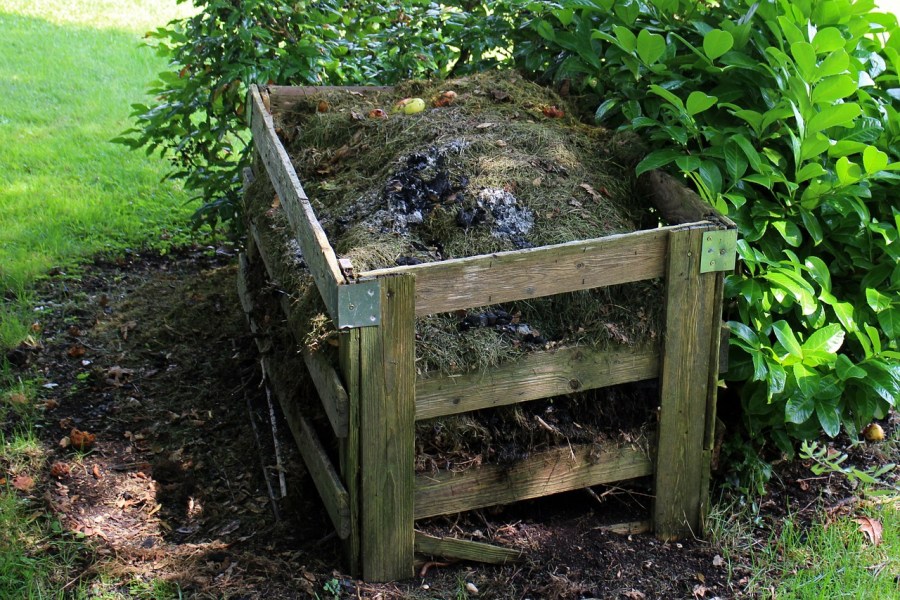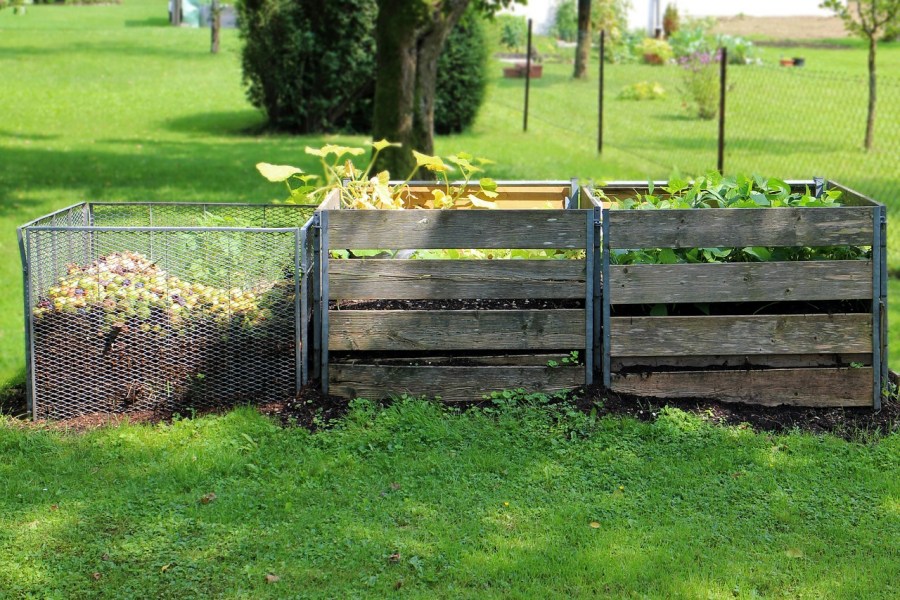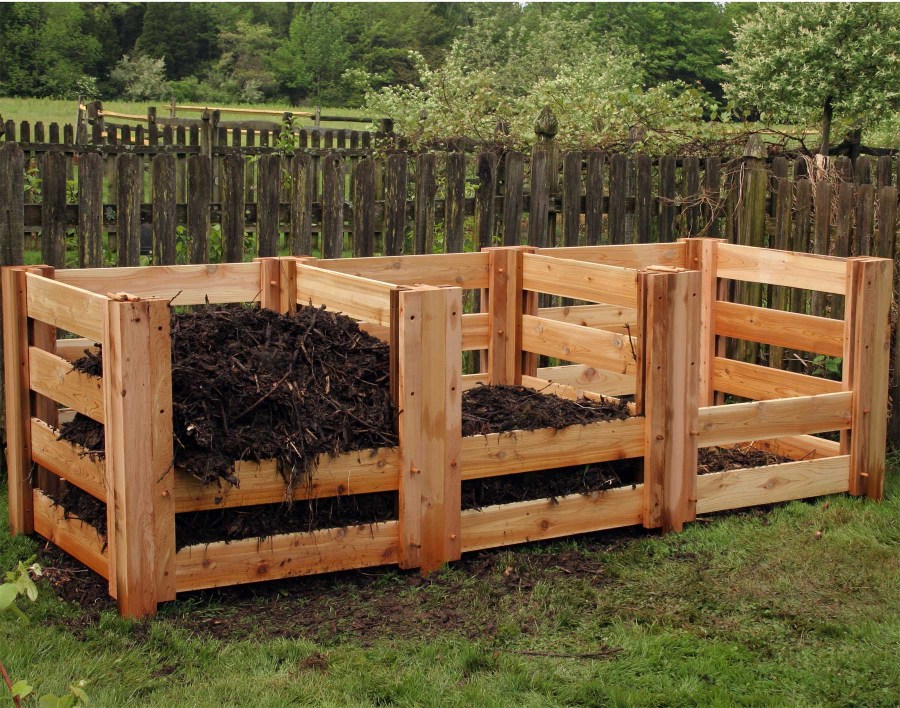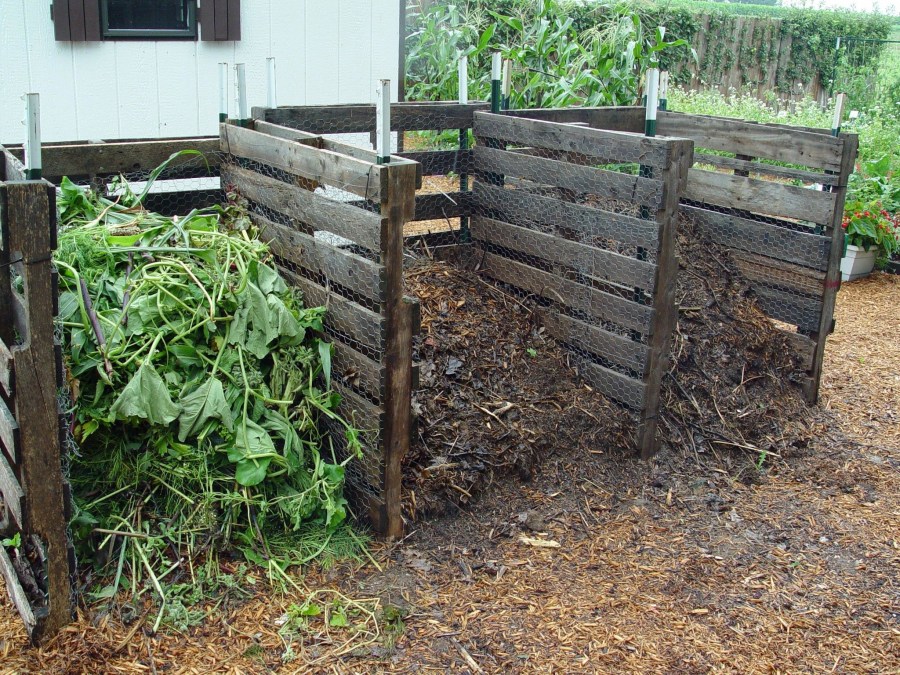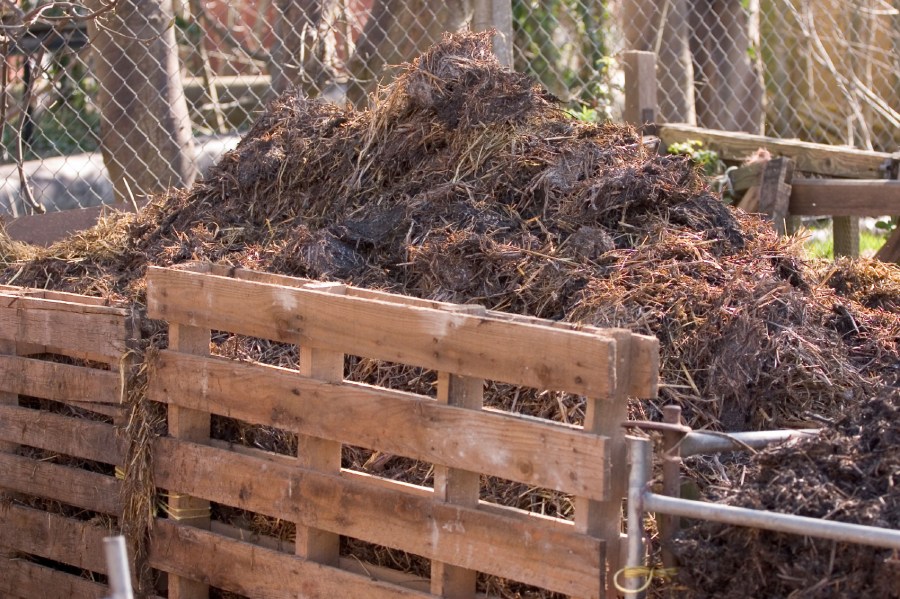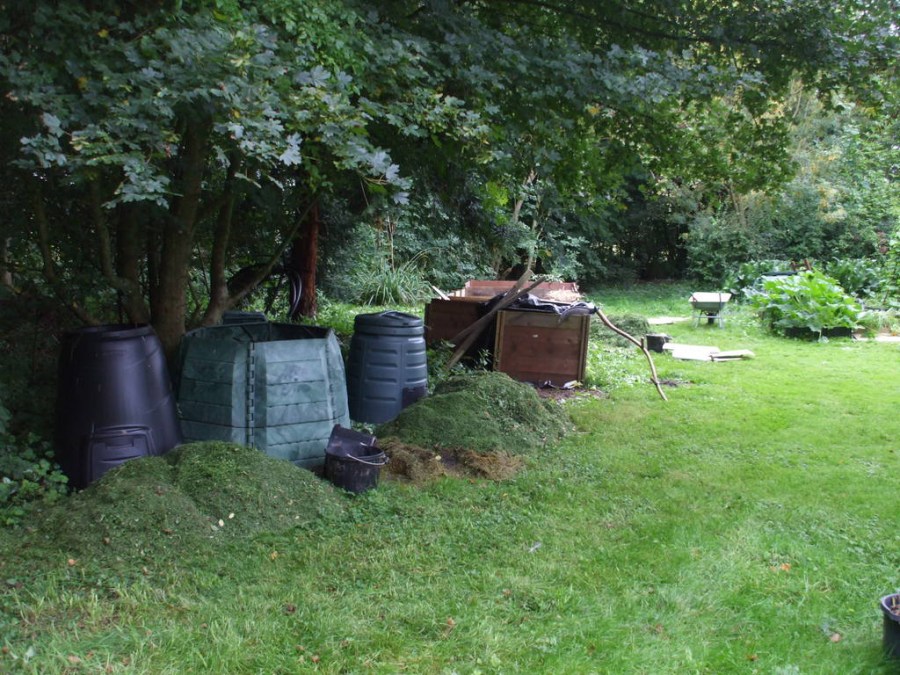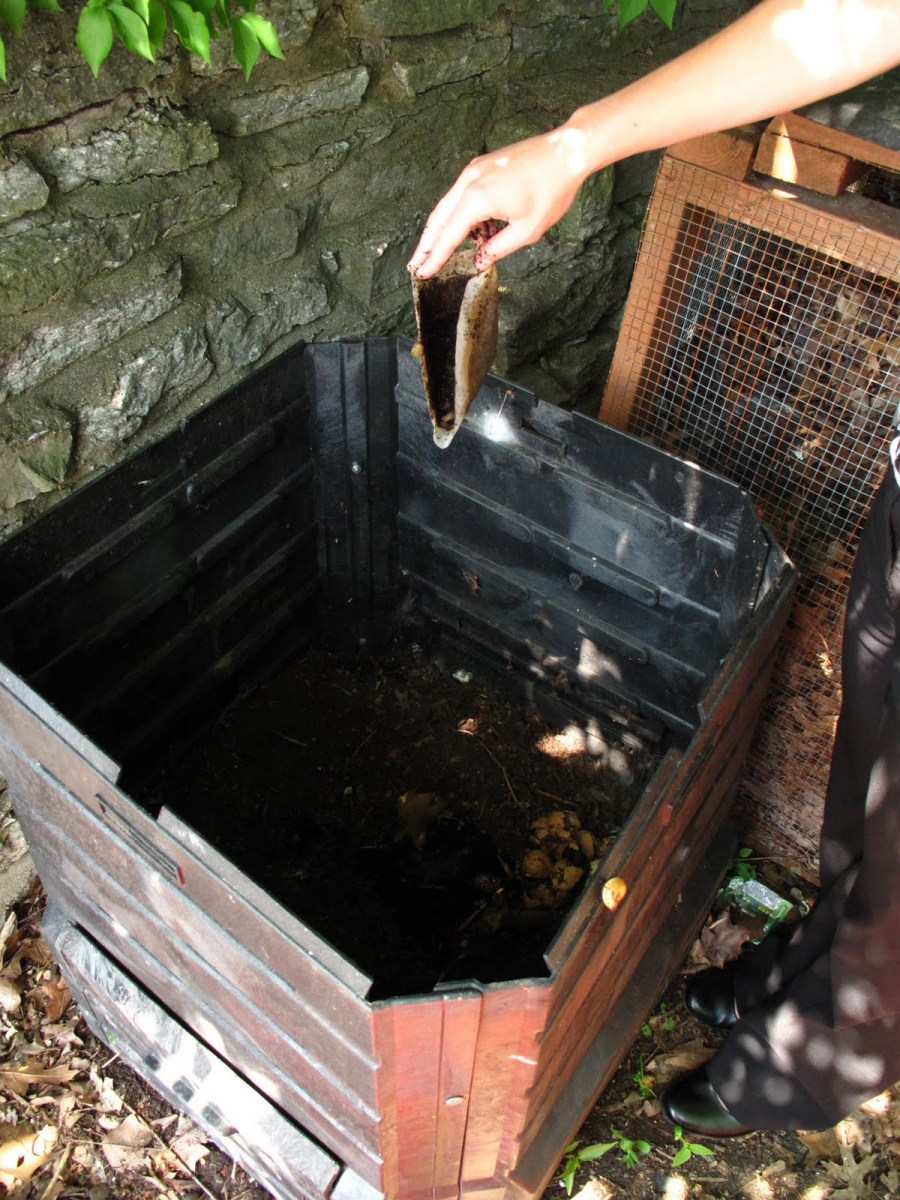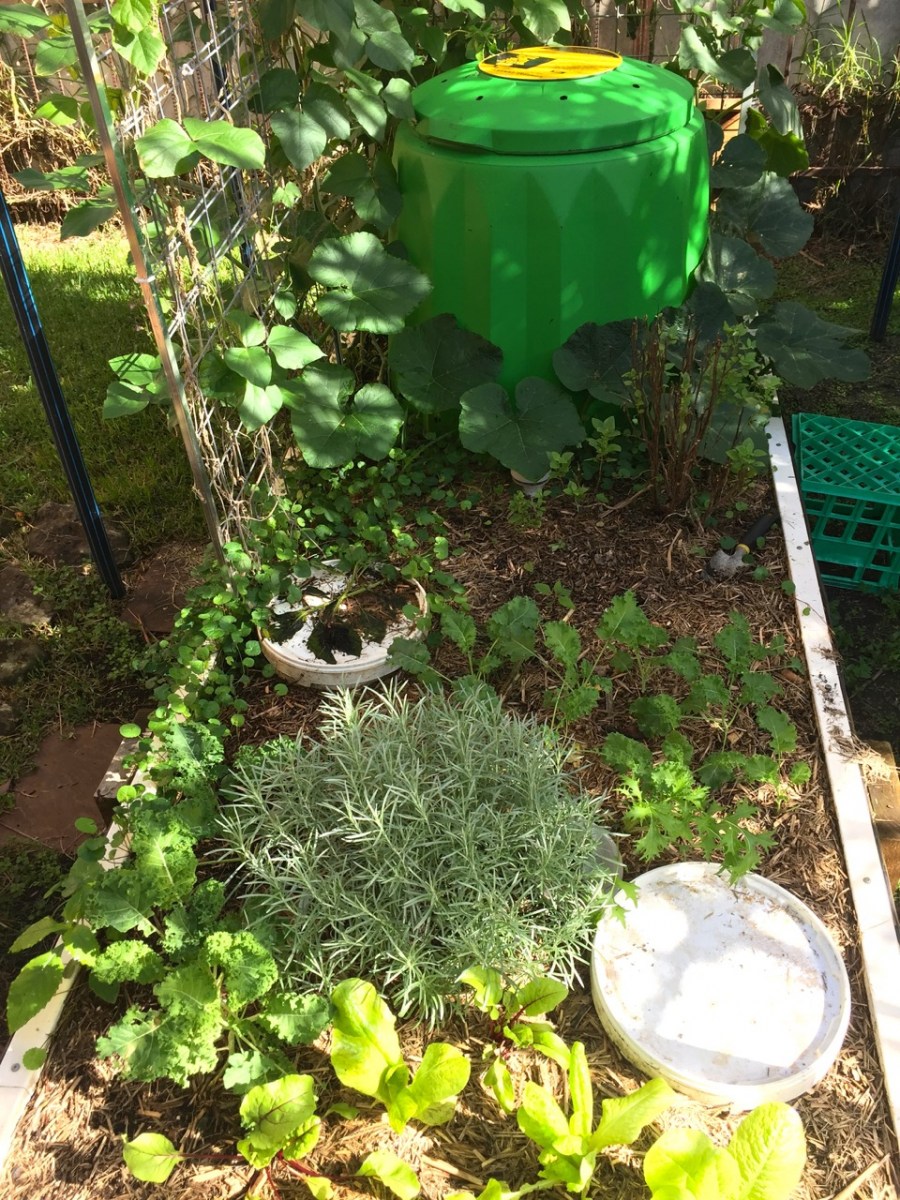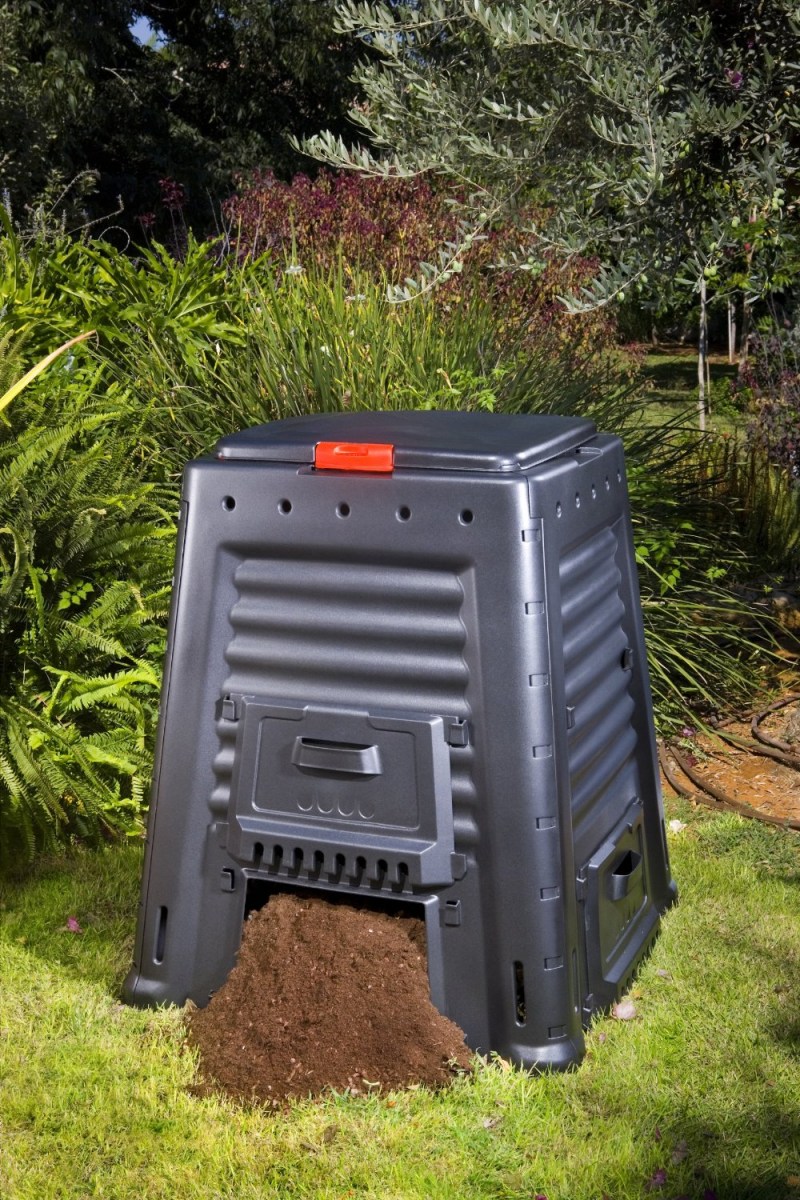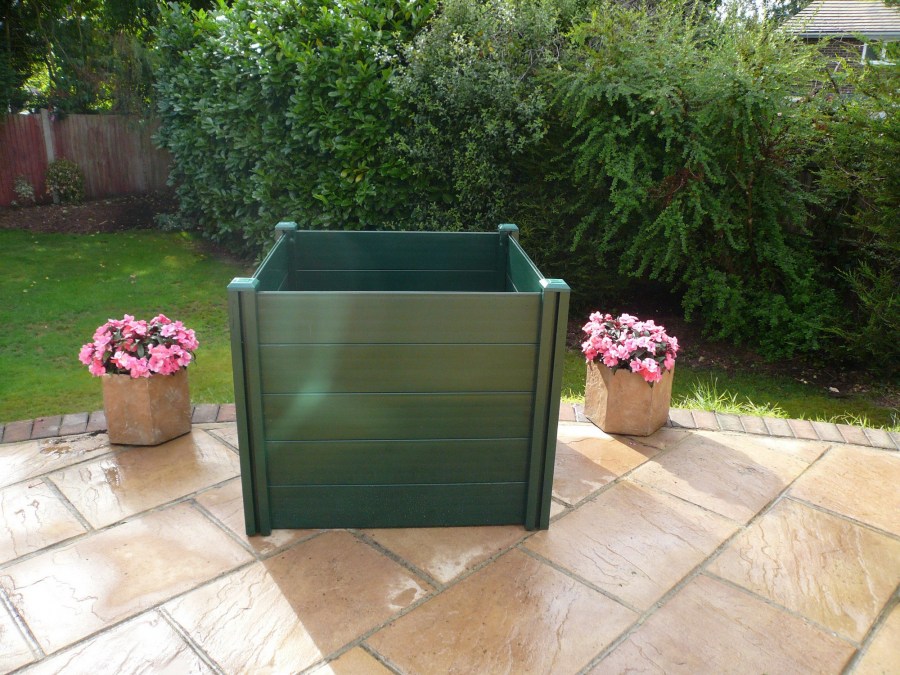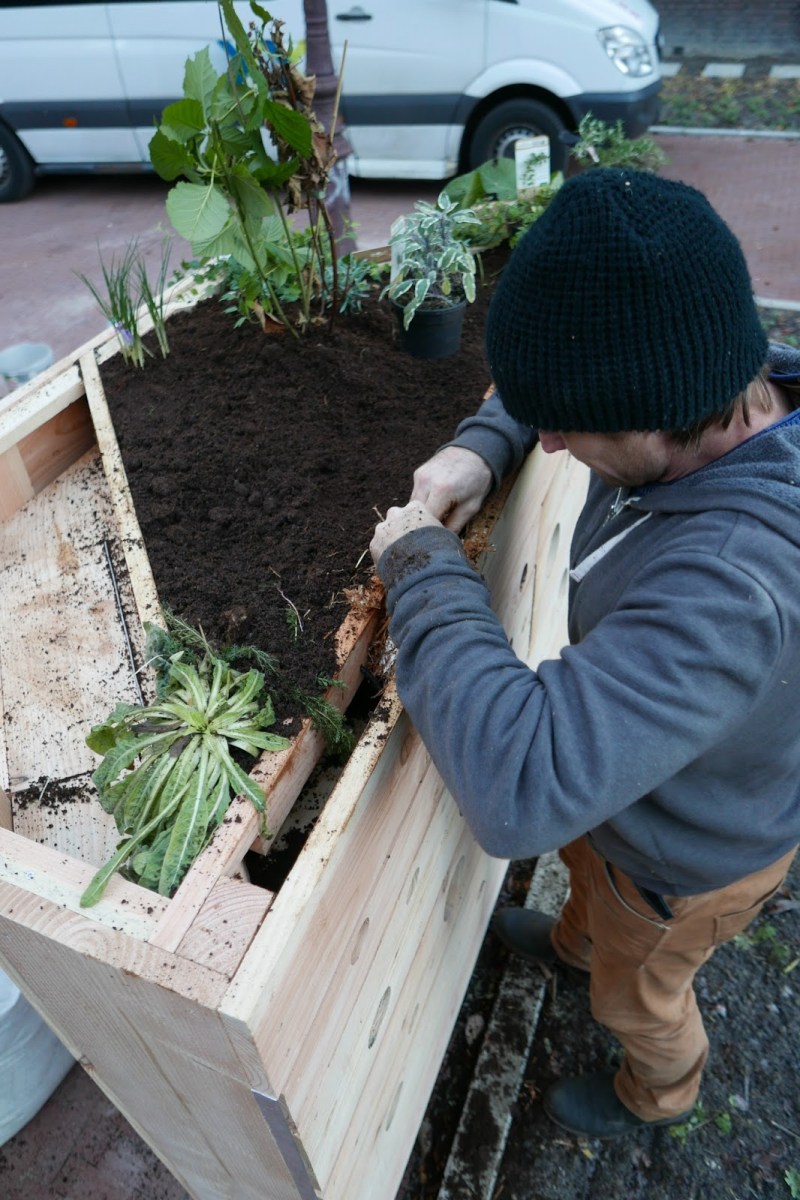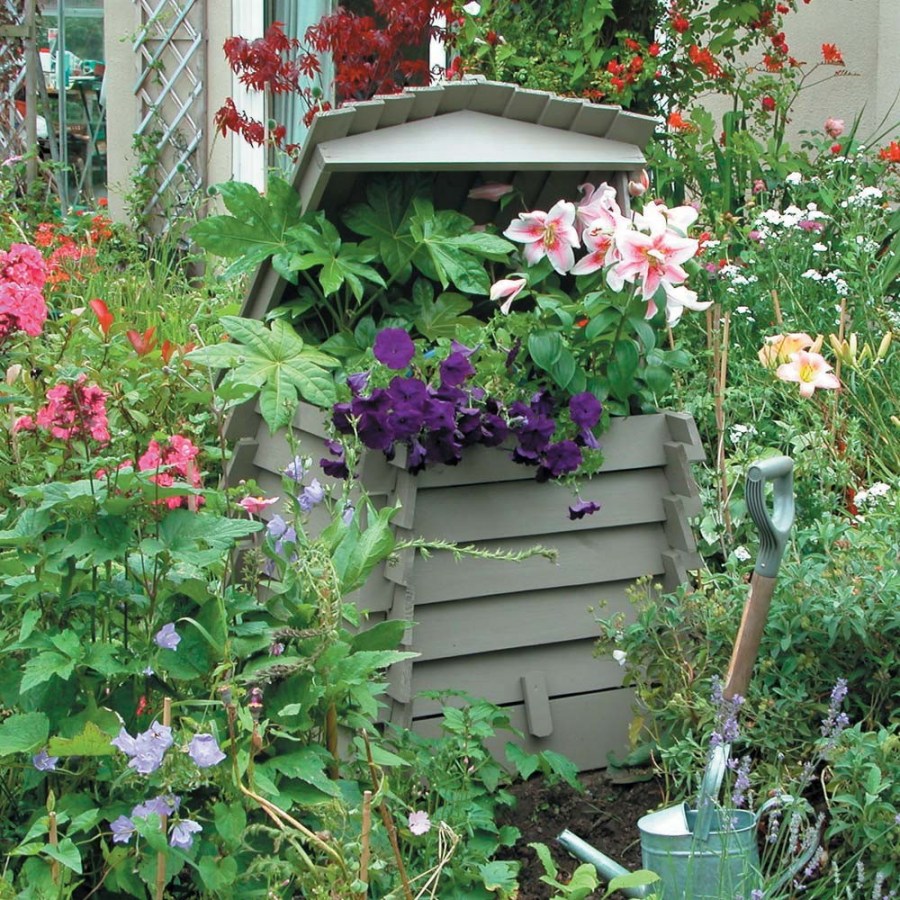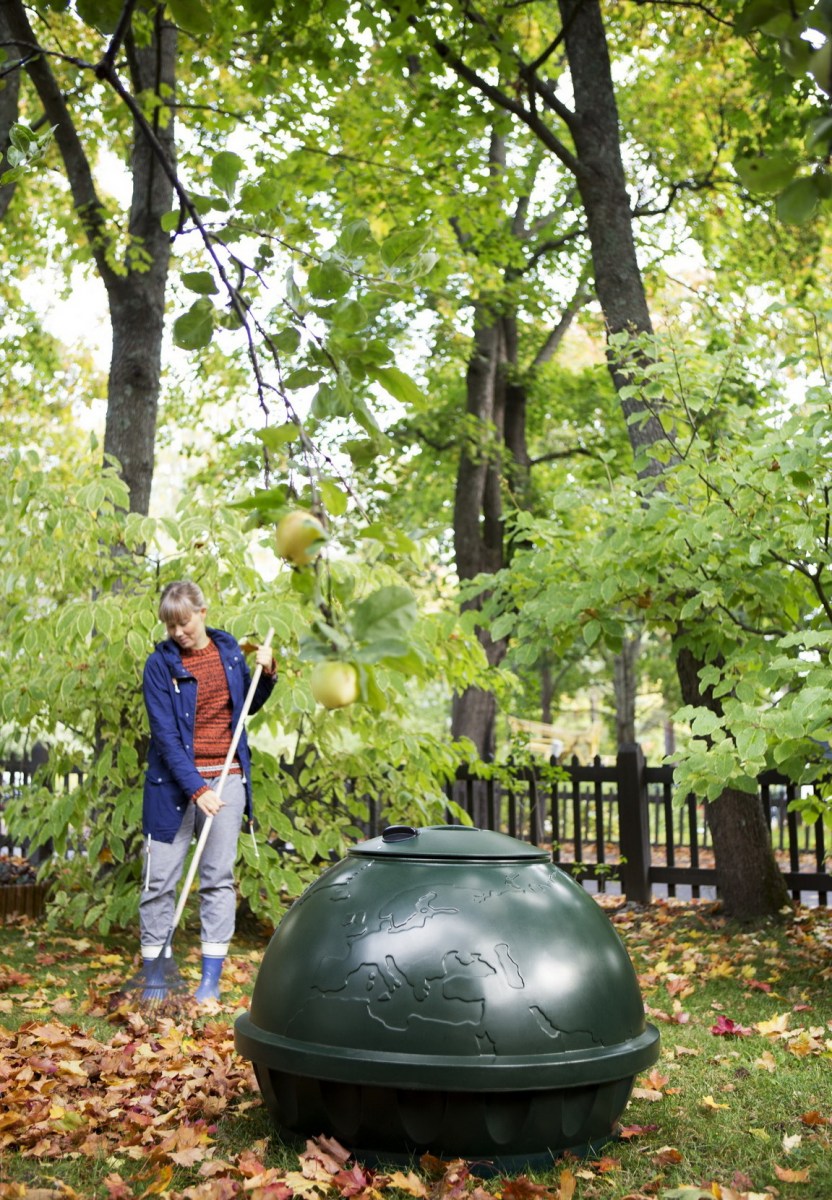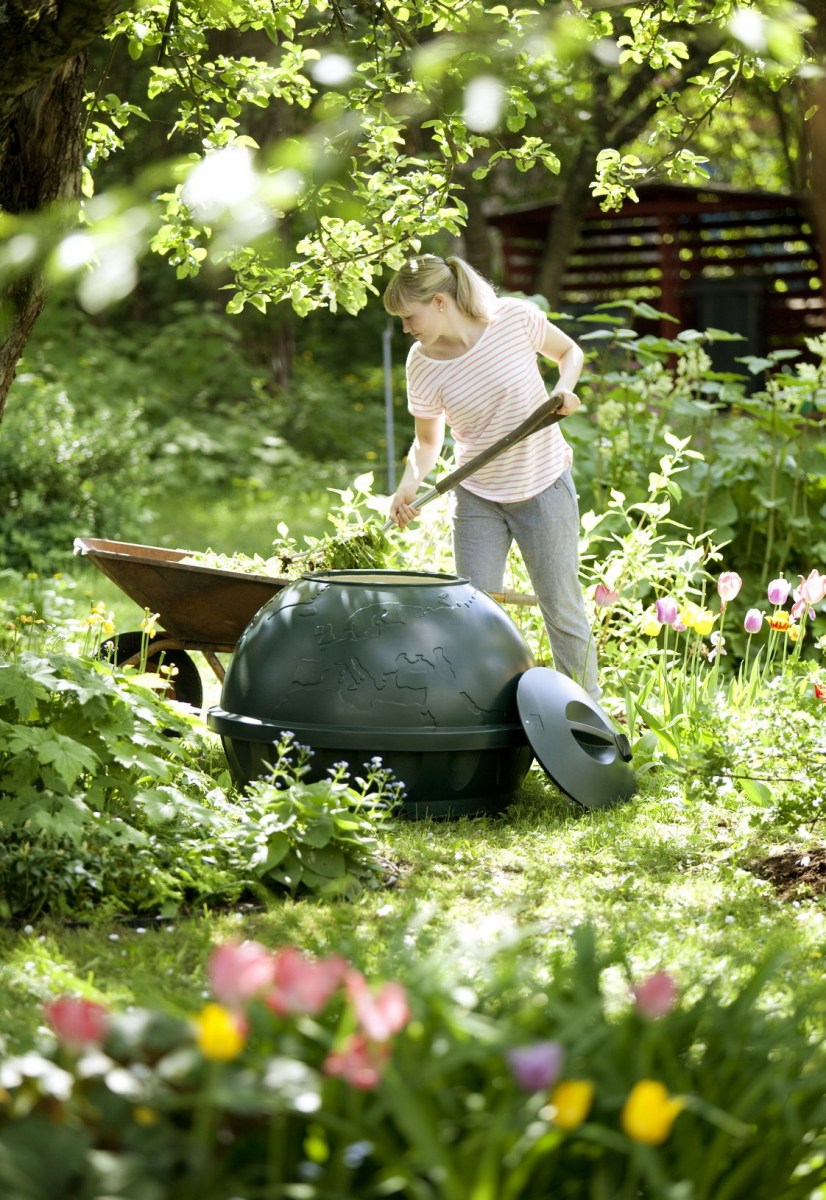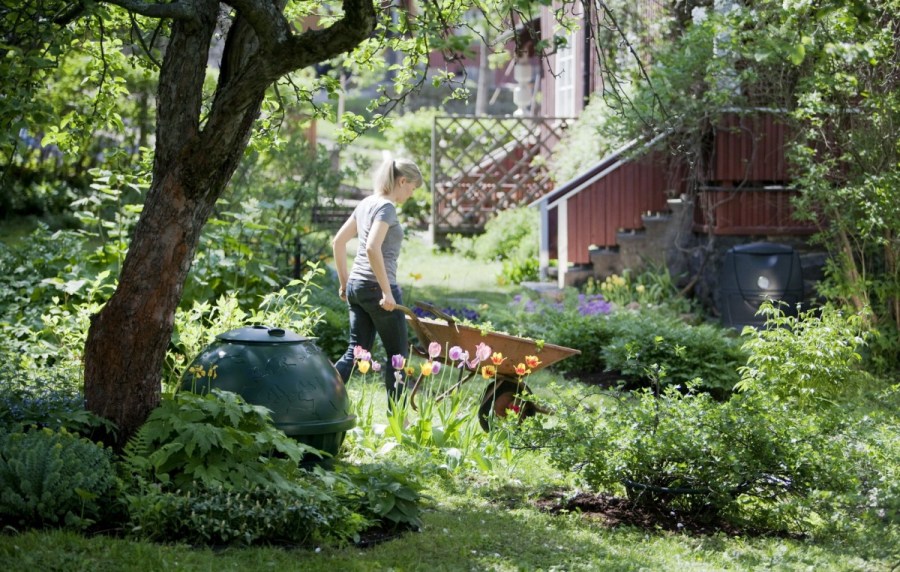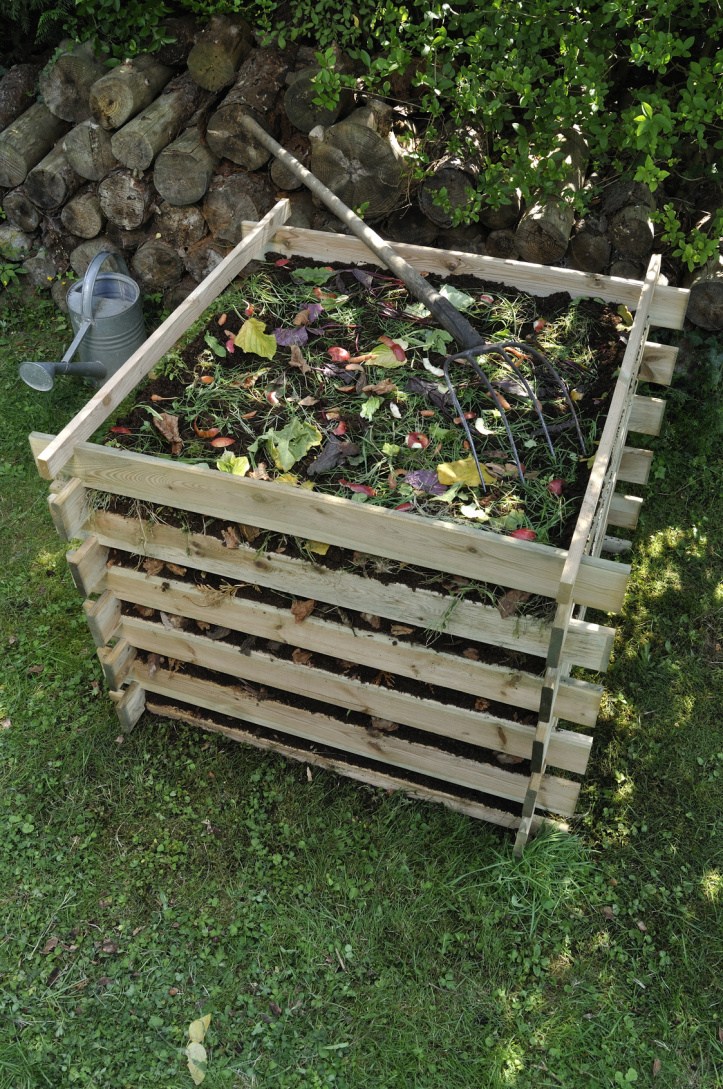Garden composter - which one to choose? Overview of the best views for giving (100 photos)
People who are engaged in the cultivation of garden and garden crops are concerned about the problem of their full and timely feeding. Garden composter will help to solve the problem simply and without any special costs.
Fertilizer composition
Compost consists of organic compounds and is an excellent fertilizer. The decomposition of accumulated waste contribute to microorganisms. Compost includes:
- nitrogen;
- carbon;
- oxygen;
- moisture.
Nitrogen is found in green grass, tops, and food debris. All this can be stored for fertilizer.
Carbon is formed in compost from dry organic residues: tree bark, straw, fallen leaves, sawdust, paper and cardboard. These components should be half as much as nitrogen-containing. As waste, manure, peat, and eggshell are also suitable.
For the formation of oxygen, you need to constantly mix the contents. It is imperative that the walls of the composter pass air. Compost must be constantly moistened. If it is dry, then it must be periodically watered from a hose.
All constituent residues gradually decay, since heat is generated as a result of the vital activity of microorganisms.
You can not use weeds, diseased plants, synthetics, peel of citrus fruits. Waste should be disposed of according to the rules.
General overview of garden composter
You can use different capacities as compost drives. Since ancient times, various wooden fixtures have been made for this. They can be of various types and designs.
A common option was barrel composters. But since the appearance of such containers is not attractive enough, they were put somewhere further in the depths of the site.
Currently, some gardeners continue to use low-cost composter options. The easiest way is compost pit depths of up to 1 m. Care should be taken for the humidification system and ventilation of the contents.
Now on sale are a variety of compost storage designs. They are more aesthetic and easy to use. Their capacity allows you to accumulate up to 200 or more liters of valuable fertilizer. Compost quality has also improved. In such containers, it has become more crumbly. See photos of different garden composters.
Industrial products have a longer service life, thought-out air circulation mechanism. The containers are airtight, which helps to obtain high-quality fertilizers.
Products for compost have different prices. It depends on the material, volume, manufacturer. The cheapest composter can be purchased for 2 thousand rubles, and the most expensive will cost 30 thousand.
For the summer suburban area, a simple and inexpensive option is suitable. For year-round use, you can buy a more expensive and practical model.
How to make a composter
You can buy a ready-made drive of organic material, and it is better to make a composter with your own hands. It does not take much time and helps to save.
There are open or closed composters, that is, with or without a lid. For a plot of 6 acres, a capacity of 800 liters is suitable.
It is necessary to consider such an arrangement of the composter so that it can be approached from any direction. The finished fertilizer will need to be spread manually over the site or delivered on a wheelbarrow.
Box sizes may vary. You can make a square with sides of about 1 meter.
The question of what to make a composter from is not acute. For self-production, different materials are suitable.
The support posts are impregnated with an antiseptic against the fungus and buried in the soil. The supports are sheathed with slate, boards, plastic and other sheet material, which is available. Attach the cover and the structure is ready for use.
Craftsmen make country composters from thin logs, from vines. It will be not only aesthetically pleasing, but also environmentally friendly.
In order for the fertilizer containers to last longer, it is recommended to use short asbestos-cement pipes for racks in the corners. Their base is better to concrete. To accumulate moisture, the bottom is left earthen.
If it is not possible to make a composter with a lid, then you can cover the structure with a piece of plastic or other material. Compost capacity may consist of one, two or three sections.
How to choose a composter made of plastic
There is a large selection of plastic composters on sale. This is a high-strength material, it is resistant to temperature extremes.
The composter is easy to use. It has a sealed bottom and a hatch with a lid. There are holes for ventilation. Waste is easily loaded into the box and also easily removed from it. Fertilizers are obtained in good quality.
The choice of gardeners and gardeners presents different models. If you plan to process only food waste, then it is better to buy a product with a capacity of 200 liters. For a plot of 4 hundredths and more, choose a volume from 800 to 1000 liters.
Pay attention to the size of the cover. It is more convenient to load and unload material, loosening, having a product with a large hatch.
Popular models are Thermo-king, Bulbeo imported. They are very convenient and practical. The German model has an insulated case, two-sided loading. There is a summer and winter mode.
Bulbeo composter made in Italy. It consists of individual modules. Waste can be loaded from several sides. The appearance of the products is attractive.
Domestic composters
Gardeners are in great demand with the composter trap. This is a domestic cone-shaped model. Four sidewalls are bolted together. The volume of the product is 1000 liters.
The composter is made of propylene with undulating walls. The design is easy to assemble and disassemble. The appearance of the product allows you to place it anywhere on the site. The compost in it turns out to be of good quality. The stores have a large selection of composters of various shapes and designs.
So, the useful accumulation of waste will help solve the problem of disposal and enrich the site with valuable fertilizer. It should be remembered that, according to sanitary standards, composters should be located at a distance of 20 m from water sources and 10 m from residential buildings.
There are many options for the manufacture and purchase of garden products for fertilizer. In favor of which composter to make a choice, decide for yourself.
Photo composter garden
Houses in a modern style - options for exclusive design (150 photos)
Crafts from tires: 65 photos of stylish garden design options
DIY snow blower - 70 photos of the best home-made devices
Do-it-yourself site improvement: photos, instructions, workshops, recommendations from the pros!
Join the discussion:
